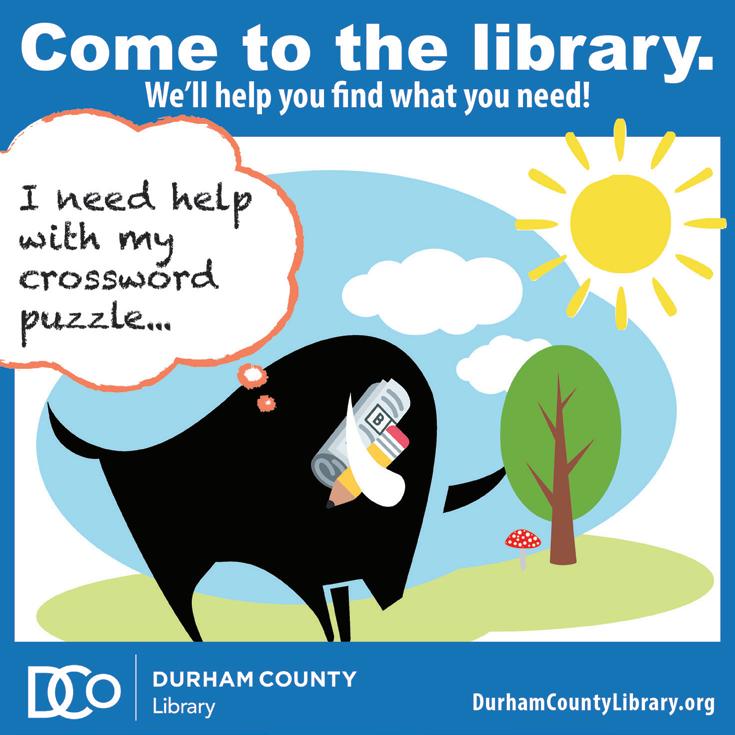September 18, 2024


September 18, 2024

Voices of LGBTQ Youth and Allies, p. 12
Triangle Pride Band strikes the right note, p. 26
A newly renovated Pauli Murray Center opens it doors, p. 28
5 Raleigh's dearth of housing has been a problem for years but new policies are helping. Will the next mayor and city council keep the city on its pro-growth trajectory? BY JASMINE GALLUP
9 The Raleigh City Council's upcoming District C race is a referndum on incumbent council member Corey Branch. BY CHLOE COURTNEY BOHL
12 Portraits of Pride: Voices of Young LGBTQ People and Their Allies. BY DESMERA GATEWOOD AND CONTRIBUTORS
26 With robust progamming and membership, the Triangle Pride Band models an inclusive, joyful way forward. BY GRACE YANNOTTA
28 The newly restored Pauli Murray Center for History and Social Justice aims to continue the late civil right icons legacy. BY AVERY SLOAN
30 Three new bars enter the Durham nightlife scene . BY LENA GELLER
34 Talking with Chris Cooper about his new book Anatomy of a Purple State. BY CHASE PELLEGRINI DE PAUR
36 Photographs and dispatches from this year's Hopscotch. BY JORDAN LAWRENCE AND ANGELICA EDWARDS
41 Incoming! Dystopian Conjecture, Body Horror, and Upstate New York. BY GLENN MCDONALD CONTENTS

PUBLISHER
John Hurld
EDITORIAL
Editor-in-Chief
Jane Porter
Culture Editor
Sarah Edwards
Reporters
Chloe Courtney Bohl
Lena Geller
Justin Laidlaw
Chase Pellegrini de Paur
Contributors
Mariana Fabian, Desmera Gatewood, Spencer Griffith, Carr Harkrader, Matt Hartman, Tasso Hartzog, Brian Howe, Kyesha Jennings, Jordan Lawrence, Elim Lee, Glenn McDonald, Nick McGregor, Gabi Mendick, Cy Neff, Sam Overton, Shelbi Polk, Byron Woods, Barry Yeoman
Copy Editor Iza Wojciechowska
Interns
Avery Sloan
CREATIVE
Creative Director
Nicole Pajor Moore
Graphic Designer
Ann Salman
Staff Photographer
Angelica Edwards
ADVERTISING
Publisher John Hurld
Director of Revenue
Mathias Marchington
Director of Operations
Chelsey Koch
CIRCULATION
Berry Media Group
MEMBERSHIP/SUBSCRIPTIONS
John Hurld
Week | indyweek.com P.O. Box 1772 • Durham, N.C. 27702 919-666-7229 support@indyweek.com to email staff directly: first initial[no space]last name@indyweek.com
919-666-7229
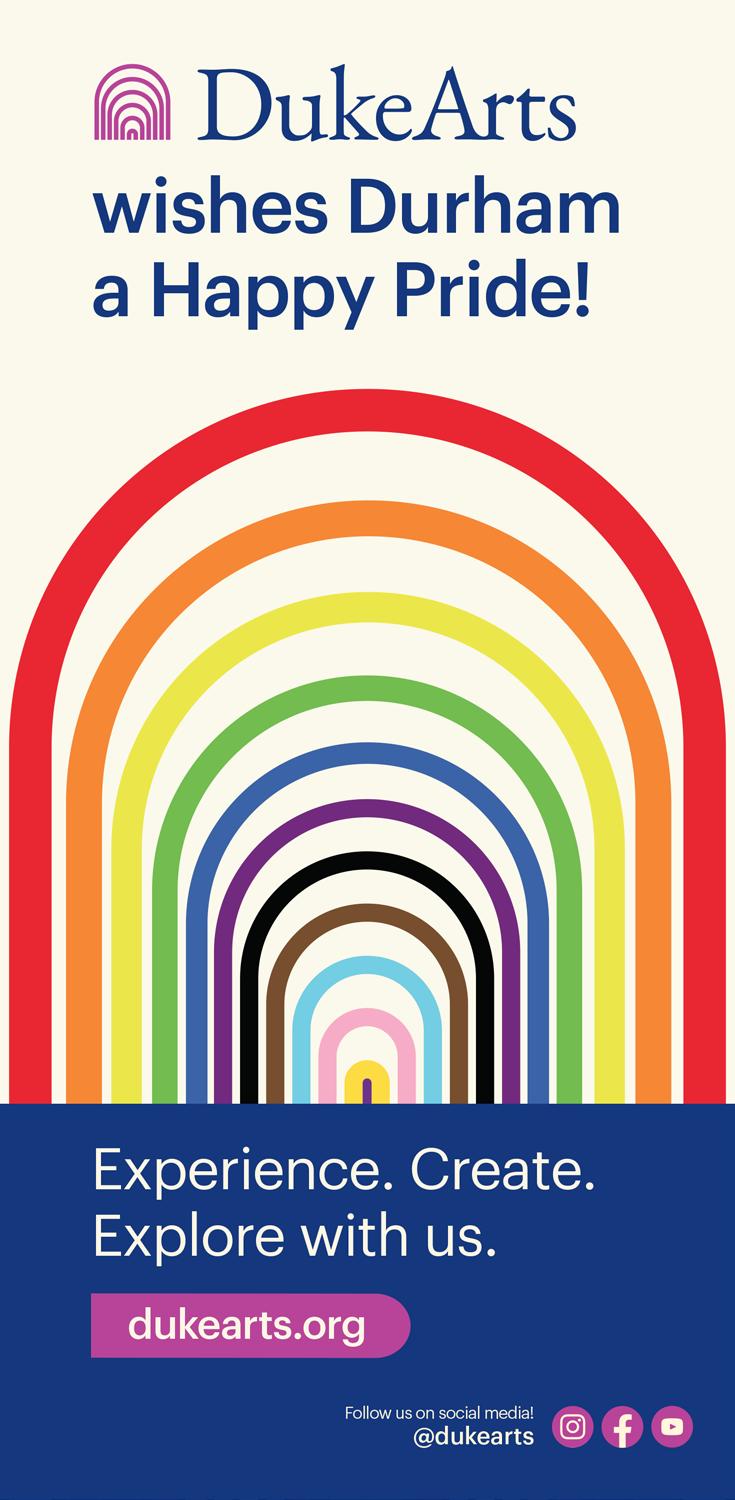
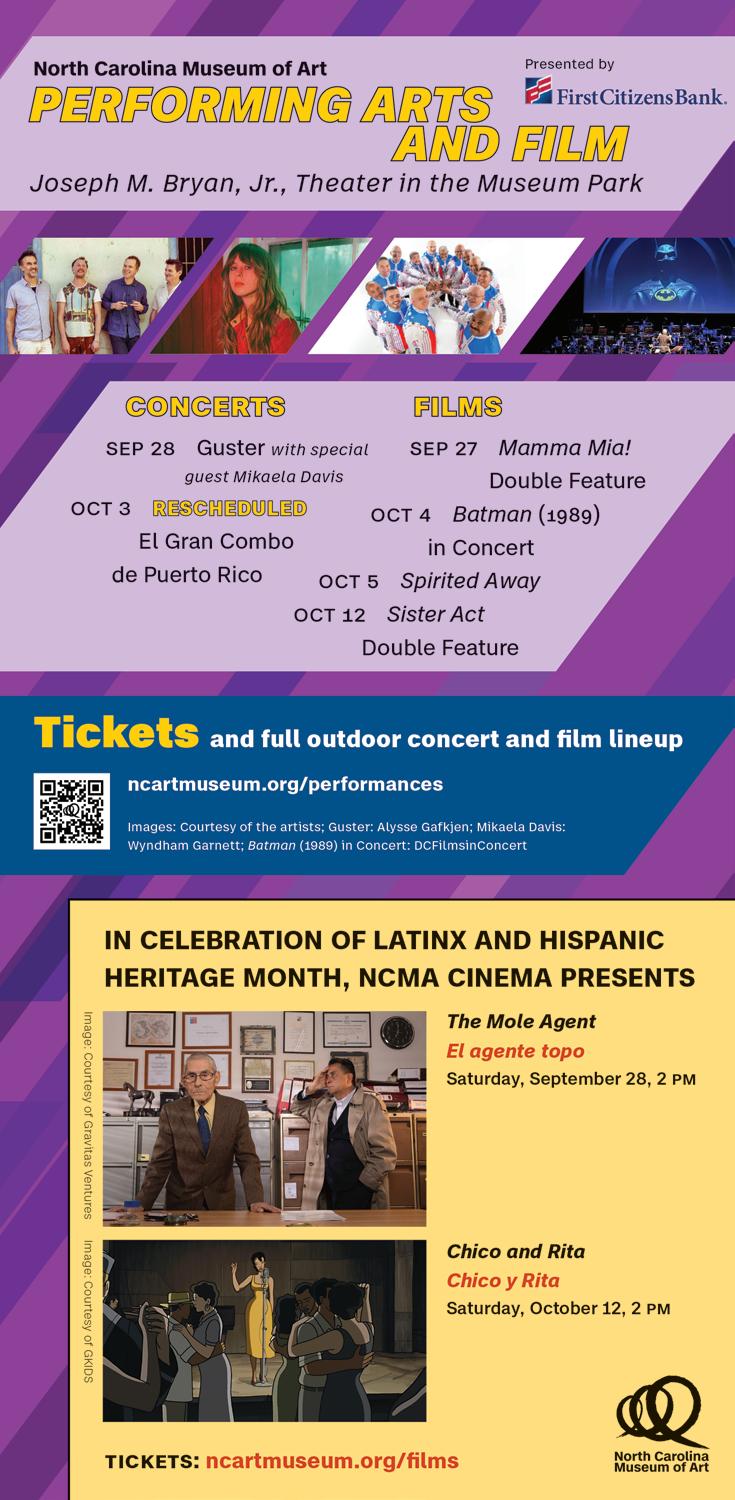
Two weeks ago, we published the first story in a series of four about the upcoming Raleigh City Council elections. We took a look back at Mayor Mary-Ann Baldwin’s eventful five years in the city’s top seat and speculated a bit about what her legacy will look like. While some readers said the story was balanced and did Baldwin’s tenure justice, others thought we could have taken a more critical view.
From reader LARRY HELFANT via email:
The article about Mayor Baldwin missed so much.
She got off to a great start in 2020 but it was downhill from there.
She started with a back door exclusionary discussion on removing support for CACs.
Then let the City burn during the riots of 2020, for which, as usual, never took any responsibility for. She has always said there were things occurring that could not be released to the public. This set the theme for continued loss of businesses due to lack of local financial or safety support.
Her intent has always been to support development first and ignore public engagement.
Can anyone really make an impact with only one minute to speak? The Mayor has been more concerned about time than content during public comment.
And from reader LEWIS BEALE , via email:
…everyone I know here in the City of Oaks thinks [Baldwin] has done a terrible job.
Baldwin and the City Council have basically been in thrall to real estate developers, who have covered the city with aesthetically boring, if not downright ugly, high rises filled with overpriced apartments and bougie retail outlets. Affordable housing? What’s that?
In addition, the mayor’s work around public transportation has been so inept, it’s made the city the next candidate for Gridlock Capital, USA - no light rail, and a Bus Rapid Transit line so behind schedule it will be obsolete by the time it’s final-
ly functional. Plus, some of the street ‘repair’ projects are so poorly thought out they are accidents waiting to happen (residents of the Village District will know what I’m referring to).
The bottom line is that Baldwin and her enablers have gone into the development process willy-nilly, with no plan other than to make the developers happy. The mess they have created will take years to correct, and in fact, may be with us into the next century. She has been a disaster.
Read our second story in the series on page 5.
We also wrote about Flagstock, the promised “rager” thrown for UNC-Chapel Hill fraternity brothers who protected a US flag during the pro-Palestine demonstrations on campus. Our verdict? Not very fun, but readers had thoughts.
From reader MIKE COLLINS via email:
The fraternity guys understood from the get-go that Flagstock and the money raised was not about their efforts.
It was about using their wonderfully patriotic gesture as a political tool. That’s why the guys from Pi Kappa Phi didn’t attend the RNC nor Flagstock.
And from reader DIANE VOLKERS , via email:
Why not use the money as a donation to TABLE that supplies food to hungry families.
As a woman that grew up in the 60’s your [Flagstock] was a far cry from Woodstock. What a waste.


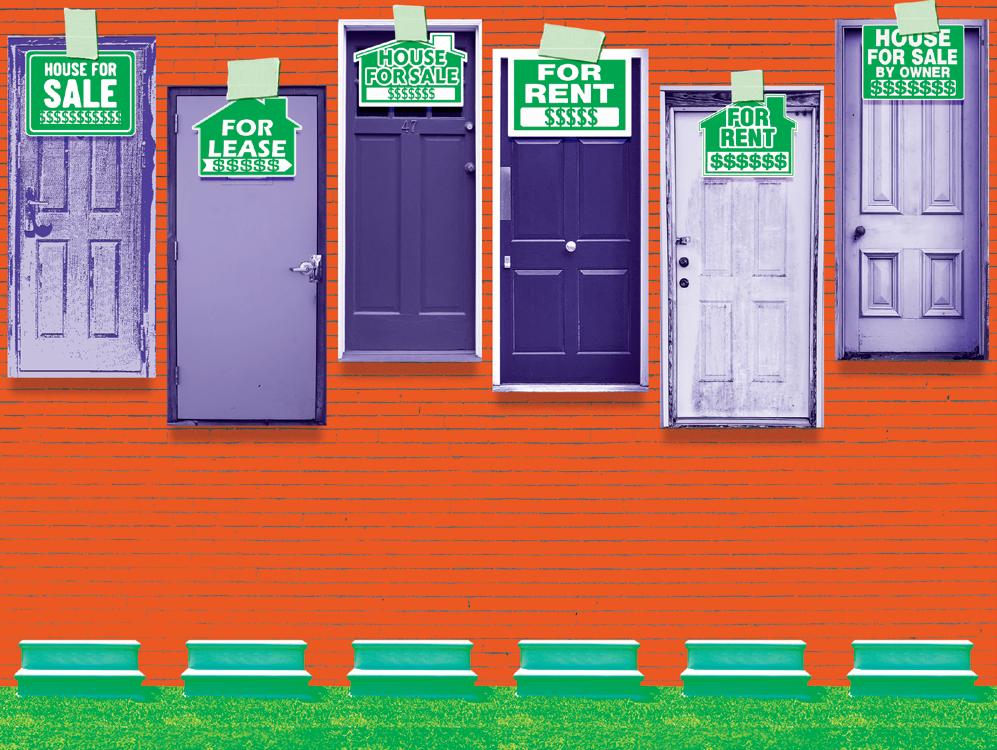
Without enough supply, Raleigh’s housing market struggles have been notorious for years, though new policies are helping. Will the next mayor and city council continue on the city’s pro-growth trajectory?
BY JASMINE GALLUP backtalk@indyweek.com
Raleigh’s housing plight is a familiar subject for many: whether you live downtown or outside the I-440 beltline, own or rent, earn five figures or minimum wage, stable housing is hard to come by. And while the housing market has recovered somewhat from the skyrocketing costs during the COVID pandemic, the crisis is ongoing.
“The increases that we saw from 2020 to 2022 were unprecedented,” says Pat Young, director of Raleigh’s Planning and Development department. “Since mid- to late 2022, about two years, it’s been pretty flat. Values have not gone down, but they haven’t gone up.
“The main issue now is that interest rates and terms and conditions for financing new developments are really challenging,” Young adds. “We are seeing a little bit of a slow down [in construction], because projects in Raleigh
are a little more expensive.”
With the city’s population continuing to boom—up nearly 150,000 people (or 10 percent) from 2020 to 2023— keeping up with demand for affordable housing is a constant struggle. Despite officials’ best efforts, demand continues to outweigh supply, inflating prices and spurring bidding wars.
Building more affordable housing has been a priority for Raleigh Mayor Mary-Ann Baldwin since her election in 2019—she supported the passage of an $80 million affordable housing bond in 2020 and enacted her signature “Missing Middle” policy in 2021. Baldwin faced pushback in 2022, however, with new council members raising concerns about how increased development impacts historic neighborhoods, aging infrastructure, and the environment.
Over the years, community members and activists have also raised concerns about gentrification, the availability of affordable housing for middle-income residents such as teachers and firefighters, and increasing rates of homelessness.
The municipal election in November could determine whether the city council will continue on its pro-development trajectory or face more resistance. Residents will vote in an open mayoral race and for candidates in all seven of the city council’s seats. As Election Day approaches, the INDY took a look at the housing market from the perspectives of Raleigh residents— a young couple looking to buy, a renter in her early 20s, and a mother experiencing homelessness.
On a Saturday afternoon in September, longtime partners Lexy Babcock and Forrest Mattingly roam through a small, two-story house in North Raleigh, quietly assessing immaculate carpets alongside used appliances.
“The floors are nice, you could re-sand them if you want,” Babcock murmurs to her boyfriend. Upstairs, she’s less impressed by the size of the bedrooms, although one could make a nice nursery, she notes. As the couple wander around, they fill in more details, imagining what the nowbare house would look like as their future home.
Babcock and Mattingly are two of the many northerners who’ve migrated south to Raleigh, finding the city more welcoming, less gridlocked, and less expensive than Philadelphia, their former home. The couple moved seven months ago for Babcock’s job, and while they’re currently renting, they’re in the market for a new house.
“We’re definitely looking for a single-family home and probably something we could grow in,” Babcock says. “We’re looking to get married, have kids.”
The couple feels like they’re in a good position to buy. They “started early,” Mattingly says, purchasing their first house when both were in their mid-20s. Thanks to low interest rates during the pandemic, the amount of equity
they put in, and the nearly doubled value of their home, selling that house has given them an opportunity to upgrade.
While the two are in a good financial position, the Raleigh housing market is still difficult to navigate.
“The pricing is definitely a little crazy. There’s a lot of houses that are 400K and it’s like, ‘For what? It’s a box,’” Mattingly says. “And If you want to be in a really nice area, it’s, ‘All right, do you have a million dollars? No? Don’t look over here.’”
The city’s efforts to increase the supply and variety of housing through “Missing Middle” is going well, according to Young. The number of townhouses, duplexes, and other small homes built under the new zoning rules outpaces similarly sized peer cities like Minneapolis and Portland, he says. And this housing is built specifically with people like Babcock and Mattingly in mind.
“[The new housing] soaks up demand from a lot of these wealthier folks that are moving into our region,” Young says. “And it opens up other housing in the market, because there’s less competition. It’s very indirect, and it’s a longgame strategy … but it’s crucially important. If we don’t do it, we’re guaranteed to have no organically affordable housing in 15 or 20 years.”
The housing constructed under “Missing Middle” is definitely within the couple’s price range, but Babcock and Mattingly may be the exception to the rule. They aren’t looking for a $400,000 duplex downtown (like the new ones at Millbank Village Court), or a $280,000 townhouse on the outskirts of the city (like those off Rock Quarry Road). The couple’s old townhouse wasn’t really big enough for their 100-pound dog, Mattingly says. Now, they’re excited to find
a quiet place with a big backyard.
Ideally, the two would prefer a house with some historic character, Mattingly says, which rules out many of the more affordable, newly built single-family homes outside the beltline. What’s left are million-dollar homes in Oakwood or older houses outside the city center that fall into the category of “naturally occurring affordable housing,” which is becoming increasingly rare.
Still, with more houses going on the market this year— listings are up 10 percent as of August compared with August 2023—the couple feels like they have options as the market cools down.
“It feels like it’s getting better,” Babcock says. “If you asked us a year, even six months ago, it would have been like, ‘I don’t know if we’ll be able to get a house here.’”
Meanwhile, in downtown Raleigh, 24-year-old Jenny Cheng is getting a cup of coffee. Unlike Babcock and Mattingly, she’s in no position to buy. The graduate student has rented a one-bedroom apartment in an older complex for the past two years.
When Cheng first moved to Raleigh, she didn’t have a lot of time to find a new place. She heard about her current apartment complex from her sister, who had lived there when rents were a lot cheaper. Cheng was surprised to see the higher rates, but she was on a timetable, so she went ahead and moved in.
“I wasn’t expecting to pay as much as I did for the
one-bedroom I lived in,” Cheng says. “I did look at a couple of other complexes, but the timeframe of moving was just not flexible. My sister’s place had availability around the time I needed to move.”
Apartments with reasonable rents remain scarce in Raleigh, despite the city and county taking action to preserve affordable complexes, like downtown’s Grosvenor Gardens. The city is also buying land near major transit corridors in an effort to help developers construct low-cost housing with below-market-rate rent.
Wake County offers emergency rental and utility assistance to help prevent displacement, but these programs are more aimed at lower-income renters at high risk of eviction or homelessness. The city (and county) are trying to stretch their money as far as possible, but many residents still fall through the cracks.
Middle-income residents often struggle to find affordable apartments that are close to where they work. Cheng experienced this firsthand. As a former private school teacher, her salary “did impact where I was looking for housing,” she says.
“I got paid more than a first-year public school teacher,” Cheng adds. “But even then, I was still struggling to make rent every month, even though I made a decent amount.”
It’s a familiar refrain for renters, especially as landlords increase rates each year. Thankfully, Cheng was able to move into a different, cheaper unit this summer, she says. She’s locked into a 15-month lease now and overall, her experience has been good.
Since the complex is a little older, she’s occasionally had issues with plumbing or other systems, but maintenance
“The pricing is definitely a little crazy. There’s a lot of houses that are $400K and it’s like, ‘For what? It’s a box.’ And if you want to be in a really nice area, it’s ‘All right, do you have a million dollars? No? Don’t look over here.’”
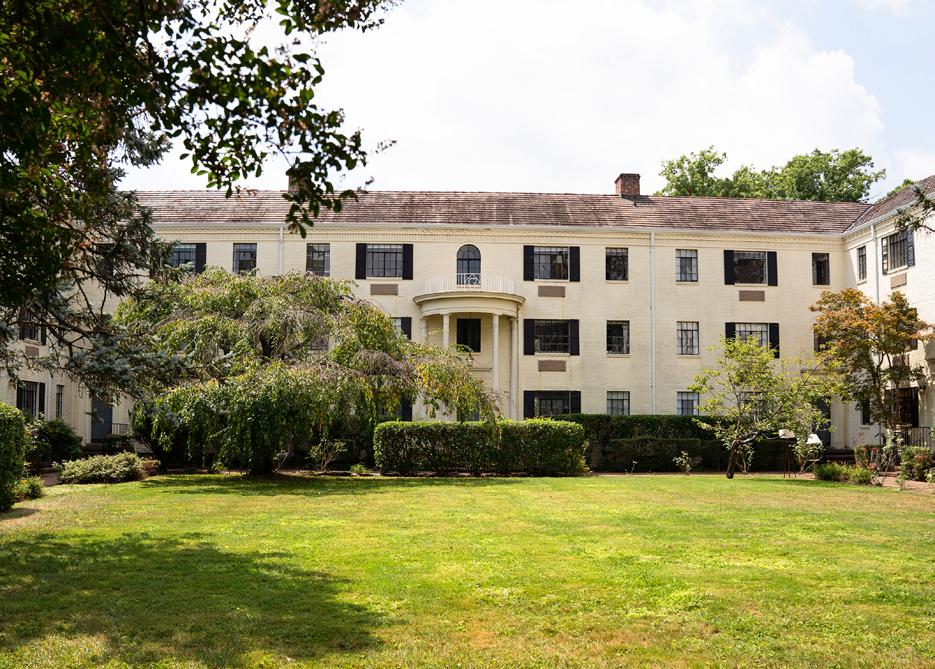
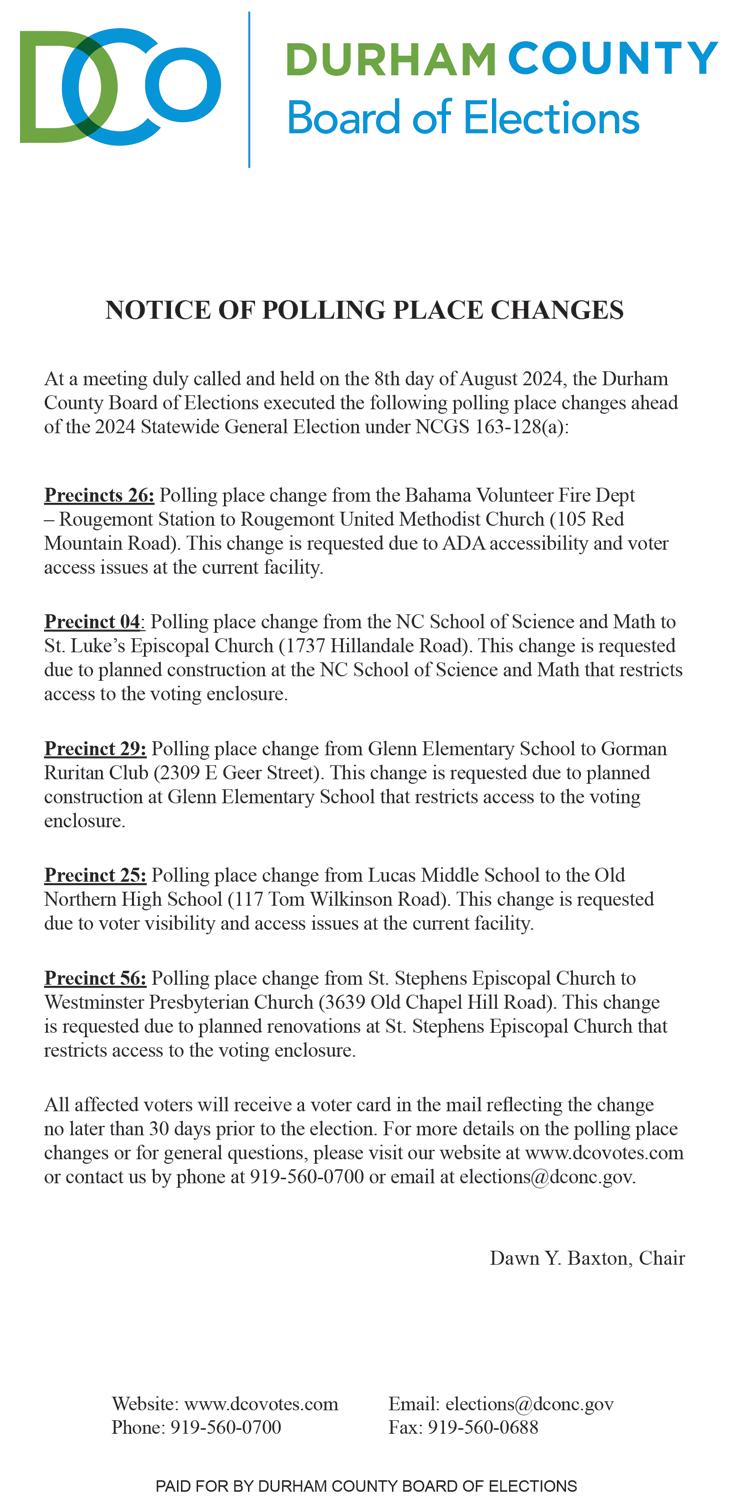
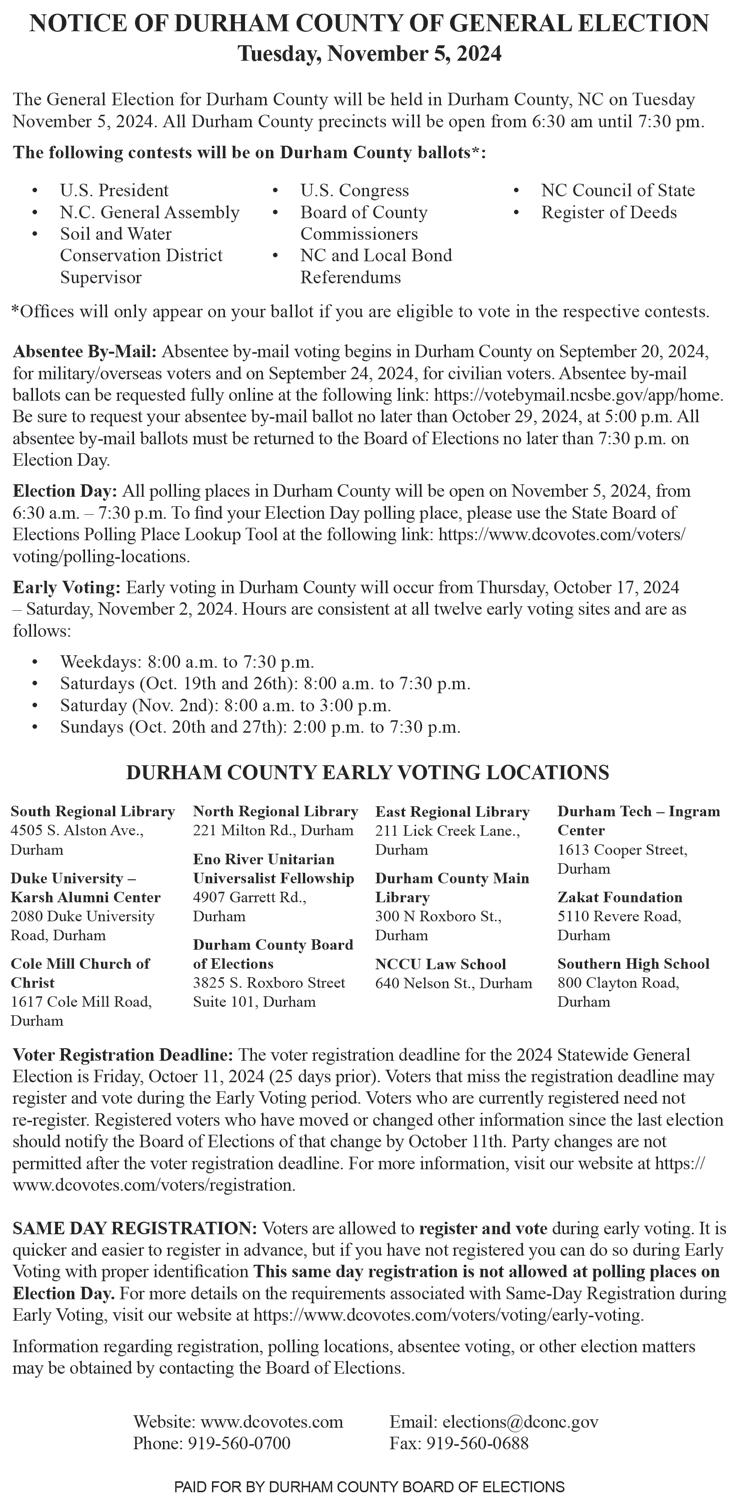
“They keep you in such a state of, ‘You need to do this when I tell you. You need to jump.’ They’re not trauma-informed programs. So, I can’t. I can’t.”

has been responsive, she says. That’s a major point in the “pro” column, as other renters have reported apartment management ignoring serious maintenance issues in agingbut-more-affordable apartment complexes. Cheng doesn’t plan on moving anytime soon, but as always, it will depend on what happens when her lease is up.
Cheng’s experience is in line with data that show that, overall, rents in Raleigh have been on the decline as more housing hits the market. According to recent rental price data from Zumper, a digital marketplace for renters and property managers, median rents in August clocked in at $1,260 for a one-bedroom and $1,560 for a two-bedroom rental. That’s down 9.4 percent and 4.9 percent, respectively, over last year.
Kara Sanders, or Kai, is a community activist, former member of a joint Wake County-Raleigh task force, and one-time consultant for NC State University. Day-to-day, she’s usually at the park or public library with her 8-yearold son, Wisdom, or showing up at Raleigh City Council meetings to make public comments. She’s also currently unhoused.
Sanders moved from Connecticut to Raleigh around 2020, looking for support from her family. When that fell through, she found herself with no place to go. Since becoming unhoused, she and Wisdom have had “pockets of stability,” she says. But it never lasts.
“I’ve had people invite us to stay with them, tell us ‘Welcome home.’ And then because they were going to be gone for the holiday weekend, and we didn’t have a place to go,
they asked us to leave,” Sanders says.
“We’ve been gifted hotel nights or things of that nature. We panhandled our way and stayed at a hotel for three, four months. Somebody gave us a car last year, and so that’s where we’re living [now].”
Sanders has experienced both acts of radical kindness and persistent unkindness from strangers, she says. People have given her money, resources, and even helped her pay for parenting classes. But when others learn she is unhoused, their treatment of her often shifts, she says. Last month, someone who saw her panhandling outside of Wegman’s called Child Protective Services.
“Somebody was that concerned about my son that when they said, ‘If you’re here calling to report abuse or neglect, click this number.’ They felt that,” Sanders says. “We’ve had a lot of people mistreat us. To be unhoused is very trauma-filled.”
Shelters and nonprofits in Raleigh offer help to residents experiencing homelessness. But after five years of jumping through hoops and shuffling from one program to another, “I realized that nobody was going to help,” Sanders says. “They were just trying to move people from one level of poverty to another.”
Trying to get into programs and access resources created so much stress that it pushed Sanders into fight-or-flight mode, she says.
“They keep you in such a state of, ‘You need to do this. You need to do this now. You need to do this when I tell you. You need to jump,’” she says. “They’re not trauma-informed programs. So, I can’t. I can’t.”
Wake County largely takes the lead on addressing homelessness, but the city has taken some steps forward, particularly in the last year. The city’s ACORNS unit, housed
inside the police department, has responded to multiple calls for people experiencing homelessness or mental health issues, connecting them with social workers who can manage individual cases over time.
In May, the Raleigh City Council approved a new, $5 million pilot program to provide direct rent assistance to about 45 households experiencing homelessness, as well as maintain and expand city-owned housing for people experiencing homelessness. More than $12 million from the 2020 Affordable Housing has also been spent to fight homelessness, including:
• $7 million for the construction of King’s Ridge, a 100unit apartment complex reserved for people exiting homelessness;
• $3 million to renovate and expand Healing Transitions, a recovery center for people dealing with addiction; and
• $2 million for the construction of 27 new apartments by Southeast Raleigh Promise, at least onethird of which must be affordable to people making 30 percent or less of the area median income (AMI), or $25,710 for one person.
Still, some, including Sanders, question the city’s dedication to addressing homelessness. Activists have repeatedly petitioned the city to shift money from middle-class housing to programs that will help the city’s most vulnerable. In Sanders’s eyes, homelessness is “solvable at the rate that we have it right now.”
Officials simply lack the political will to fight it in a more significant way, she argues. W
This is the second story in a four-part series on the Raleigh City Council leading up to the municipal election this fall.
The upcoming District C race, featuring six challengers, is a referendum on Raleigh City Councilmember Corey Branch’s decade of leadership through a period of growth and gentrification.
BY CHLOE COURTNEY BOHL chloe@indyweek.com
On a cool early August evening, storm clouds hang low over the Tarboro Road Community Center in Southeast Raleigh.
Inside, a modest crowd of residents gather for a city-sponsored “neighborhood night out” celebrating local law enforcement. Police and firefighters mill about in uniform, shaking hands and making small talk. In the community center’s gym, a handful of people hover around information booths while their kids play or line up for the popcorn machine. The real action is at the other end of the building, where people have gravitated to a dinner buffet in the multipurpose room.
The buffet crowd doesn’t hear Corey Branch, the District C city councilmember who represents Southeast Raleigh, deliver brief remarks. Neither do the people in the room with him: the feedback from his microphone ricochets off the high walls of the half-empty gym, creating a cacophony of fuzzy, indecipherable sound.
It doesn’t really matter, though. Branch looks comfortable in the space. He’s traded the jacket and tie he normally sports at council meetings for shorts and a red polo shirt. As he chats with officials and snaps photos with residents, his message is clear: “Here I am. I show up, I’m accessible, I work for you.”
Whether all those things are true depends on who you ask.
Branch, a 46-year-old network engineer manager at a software company, was born and bred in Raleigh. He has represented District C for nearly a decade, ever since he unseated the late former council member Eugene Weeks in 2015. Through three election cycles, Branch fended off political newcomers and perennial candidates who never mounted a serious challenge. He stayed popular advocating for more affordable housing, championing Bus Rapid

Transit, and consistently supporting CACs.
Even before Mayor Mary-Ann Baldwin announced she would not seek re-election in April, Branch threw his hat into the ring for the city’s top job. But in the months that followed, Raleigh’s political elite and donor class coalesced around his opponent, Dix Park Conservancy president and CEO Janet Cowell. Cowell, a former Raleigh city councilmember, state senator, and state treasurer, has the support of two popular former mayors, Nancy McFarlane and Charles Meeker.
Branch appeared to see the writing on the wall and bowed out gracefully.
“There were calls and concerns and just residents saying, ‘Hey, we want you to continue to be our representative here within the district,’” Branch said during a July 17 press conference. “Being a native son, you know, you have to listen.”
By the time Branch filed his District C paperwork and scrubbed “Corey Branch for Raleigh Mayor” from his website, six other candidates were vying to fill what they had expected to be a vacant seat.
This time around, the challengers are more serious. All say Branch has fallen short. Some boast deep roots in Southeast Raleigh and prior government experience. And one just earned the endorsement of the Wake County Democratic Party.
Branch has his own friends in high places, including Baldwin and the popular at-large council member Jonathan Melton, both District C denizens. Branch also believes his constituents, by and large, want him to stay.
But if he was expecting a smooth homecoming, he isn’t going to get it.
In Branch’s district, history is clashing with growth and development in real time.
Southeast Raleigh is a historical epicenter of Black culture, and, against a current of segregation, urban renewal, and underinvestment, it became an epicenter of Black home ownership.
More recently, the area’s relative affordability paired with its proximity to downtown made it prime for new housing development.
Many of the new units are not affordable for current residents, catering instead to the influx of wealthy professionals moving to the city in droves. Meanwhile, longtime residents see rising prices, property tax increases, demographic changes, and gentrification as existential threats.
In this climate, nothing Branch does for the district goes uncriticized. As chair of the council’s Transportation and Transit Committee, he fought to make sure the city’s Bus Rapid Transit rollout began on New Bern Avenue. Some residents praised him for bringing new infrastructure and investment; others say the bus line will only breed more displacement.
With no perfect solutions in sight, the upcoming District C election is a referendum on Branch’s leadership through this period of change. Some voters hold him personally accountable for the pace of development. Others see growth as inevitable, even positive, but complain that community infrastructure—grocery stores, bus stops, first responders—isn’t keeping pace with new housing and wish their councilmember had done more.
Compared to Branch, who has nearly a decade of council experience, his opponents are blank slates. They have fewer relationships but less baggage.
There’s Daniel Grant-King, a 24-year-old special education teacher for Wake County Public Schools. Originally from New York, Grant-King has lived in Raleigh most of his life. He served as secretary of the Young Democrats of Wake County and made an unsuccessful bid for a seat on the county school board in 2022. Grant-King says housing affordability, transportation, and public accountability are the biggest reasons he is running. He wants to add new public transit options such as electric buses and create a city office dedicated to preventing evictions.
“People are ready for change,” Grant-King says, pointing to the council’s failure to pass a Gaza ceasefire resolution as a sign that the body is disconnected from the community it serves. (The council split 4-4, with Branch opposing.)
On the other end of the ideological spectrum is Tomara DeCosta, a clinical researcher, longtime District C resident, and the only Republican in the race. Her top priorities are improving public safety and bringing more businesses to Southeast Raleigh, she tells the INDY. A newcomer to local politics, DeCosta thinks voters will appreciate her pro-growth, pro-small business perspective, if they don’t automatically discount her for being a conservative.
Portia Rochelle is the former president of the RaleighApex branch of the NAACP, a role she says shaped her into a skilled community advocate. After twice running for an at-large seat on the council, she’s narrowed her focus to District C. Rochelle says Raleigh should raise its minimum wage for city workers and pressure developers to build more
low-income housing. (State law limits the city’s power to do this.) She also advocates for transparent, accessible leadership, something she says her background in youth ministry and NAACP work prepare her for.
DaQuanta Copeland is the community engagement coordinator for the Wake Department of Housing, a role that sends her all over the county to promote its affordable housing resources. She’s also the former vice chair of the Wake Health and Human Services Board, a volunteer position where she advised on county-wide policy. Copeland has never held elected office, but she stands on her government experience coupled with her 30 years as a Southeast Raleigh resident.
“I’ve seen the changes that have happened, all the disparity, displacement, and lack of knowledge of accessible resources [in District C],” she says. “I want to help stabilize my community.”
Jared Ollison boasts even deeper roots in the district: his family has lived, studied, and worshiped here for generations, he says. Ollison attended Wake public schools before joining the Air Force. Following an honorable discharge, he worked as a deputy in the Wake County Sheriff’s Office and later ran the Wake County Detention Center—“unfortunately, jokingly referred to as the largest mental health institution in all of Wake County,” he says.
Ollison says working in law enforcement sensitized him to the city’s need for better mental health resources. He sees gentrification and homelessness on the rise in District C, and suggests offering tax breaks to developers who build income-restricted housing (again, state law limits the city’s ability to do this). Ollison pledged to donate some of his council salary to district youth programs and says he does not support BRT on New Bern Avenue because it could

cause property values to soar, displacing legacy residents. Ollison emphasizes he’s in touch with the people and history of Southeast Raleigh.
“When I ride down the road, I don’t see the same things that some other people see,” he says. “Sure, I see some blight. But I also see a prideful people … they want an opportunity to build what my family has built, and it is my moral and ethical obligation to find a way to help them, so they can have their own story to be proud of, their own legacy to share with their children.”
Then there’s Tolulope Omokaiye, a Southeast Raleigh small business owner who served on the Raleigh Transit Authority—a volunteer body that makes policy recommendations to GoRaleigh—for eight years, five as chair. Omokaiye wants to make Raleigh more equitable and affordable. For transportation, that means adding bus stops and shelters in communities that don’t have them. For housing, it means curbing “predatory” luxury housing development in favor of affordable and mixedincome options.
“I was the first woman and one of the first people of color to chair the Transit Authority, and I’m very proud of that,” she says. “I know with transit comes development, and I want everybody to have an opportunity to participate in that development as it grows the district.”
Community engagement is key to Omokaiye’s election strategy, she says, especially in a crowded race against an incumbent. She also won the county Democratic Party’s endorsement, so will have some help on this front. Omokaiye can access the party’s Voter Action Network, a database full of coveted voter contact information, she says. Plus, her name will be on the party’s slate card, a list of candidate recommendations it distributes during get-out-the-

vote canvassing and at the polls.
“We need to listen to everyone in the district, including legacy residents, and bring those ideas back to the council chamber—versus going to the community and telling them what’s going to happen,” Omokaiye says.
There are through-lines in the candidates’ assessments of the district’s strengths and challenges. They generally agree it’s a culturally rich, historic community with a serious housing affordability problem and need for better transportation and human services options.
Unsurprisingly, the candidates also share a dissatisfaction with Branch.
“He’s only advocating for a certain group of people,” says Grant-King.
“He’s had four terms, and yet District C is still full of disparities and expeditious displacement,” says Copeland.
“His policies have hurt our community,” Ollison says. “People can’t afford their mortgages, their rents, and our transportation system has failed the community. Many of those problems did not exist prior to his taking office.”
Branch defends his seat
Branch tells a different story of his nine years in office. He describes himself as a dedicated public servant with valuable relationships on council and beyond.
During his tenure, Branch notes, the council has approved more affordable housing projects in District C than any other district. And despite the BRT backlash, he celebrates it as a win for the community. Branch says his next focus is getting more grocery stores and other “amenities” into the district to match the housing and population growth.
“We cannot put a wall or a fence up around our city,” Branch says. “People continue to move here. We just have to figure out a way, from an economic development standpoint, to help those who’ve been here to still be a part of the growth.”
People complain about aspects of Branch’s record, but he says it comes with the territory.
“You get nothing done without having relationships and trust built over time,” Branch says.
“I can call the secretary of transportation for the state about an issue … I can reach out to the county manager directly … I can also reach other municipalities across the state. How are they addressing housing in Charlotte? How are they addressing transportation in Greensboro? I have those relationships.”
Branch’s council colleagues agree.
“He works hard to have a good relationship with the staff and other councilors,” says Jonathan Melton, who lives in Branch’s district and has worked with him for years.
Melton calls Branch a thoughtful decisionmaker and a “good partner” on district-related issues. He remembers how the two first bonded, when Branch took him out to dinner to celebrate his election in 2019.
Branch also has a friend in Mayor Baldwin, although the two don’t agree on everything. They served together on the Wake County Transit Plan Committee, and in 2023, Baldwin named Branch her mayor pro-tem.
“He listens, he holds meetings, he’s out in the community. He is an engaged leader,” Baldwin says.
Baldwin and Branch have a foundation of mutual respect,
she says, even when they disagree—as was the case in 2020 when Branch voted against disbanding Raleigh’s CACs.
“We respected each other’s opinion and understood where the other was coming from. I know that CACs are important in that district, and he felt an allegiance to that,” she says.
But Baldwin’s endorsement of Branch is not unqualified.
“Sometimes, he needs to vote his conscience instead of voting for something that’s popular,” she says with a chuckle, declining to provide a specific example.
Although Baldwin says Branch is the best person to represent District C, she says he wasn’t quite ready to be mayor.
“His strength is he is focused on his district. And his weakness in running for mayor is that he is focused on his district. You have to have a bigger picture. I’ve told him this: ‘Get out of your district more and build bridges with people throughout the community.’”
One thing Branch isn’t focused on is the Wake County Democratic Party’s endorsement of Omokaiye—the party didn’t endorse Branch in 2022 either.
“It is a select few members of the leadership that [make] the endorsement,” Branch says.
Kevyn Creech, the county party’s chair, wouldn’t share specifics behind the party’s endorsement process but says Omokaiye gave an impressive interview and cites her Transit Authority work.
“That was definitely a plus for her,” Creech says. “And there are other people in that list who could do a really good job, but she just bubbled to the top.”
The Raleigh Professional Fire Fighters Association (RPFFA) also endorsed Omokaiye.
“[Omokaiye’s] values, experience, and dedication to public service align closely with our mission to support and advocate for working-class people and the communities we serve,” wrote RPFFA president Andrew Davis.
Outside of District C, the RPFFA endorsed a mix of incumbents and challengers. Davis says Branch hasn’t “prioritized public safety in Raleigh” during his long council tenure.
“The last time a new firefighter position was created was in 2014,” Davis says. “The fire department has been stagnant while the city has exploded with development and growth.”
The group supported Melton for reelection but not Stormie Forte, the other at-large council member who has served multiple terms on the council.
“I understand some of [the Raleigh firefighters] are upset and mad with me,” Branch says, adding that he doesn’t think many of the group’s members live in Raleigh or Wake County. Still, he says he will “do everything I can to make sure [firefighters] have the tools and the resources they need if re-elected.”
The NC AFL-CIO, the federation of North Carolina labor unions, endorsed Branch. So did the Raleigh Police Protective Association, which represents more than 500 Raleigh police officers. The Raleigh-Wake County Home Builders Association and the Raleigh-Wake Citizens Association both endorsed Branch in 2022, but have not yet endorsed in the 2024 race and did not immediately respond to the INDY ’s request for comment.
District C weighs in
At the Tarboro Road Community Center, many longtime Southeast Raleigh residents tell the INDY they supported Branch in the past and would again. He’s pretty accessible, they say. He is there with them at this event—where are the other candidates?
Everyone the INDY spoke to at least knew who Branch was, even if they were undecided or uninterested in politics. In contrast, hardly anyone could name one of his challengers, suggesting an advantage for Branch in a field of relative unknowns.
Elsewhere in the district, opinions on the race are more mixed.
Ulysses Lane, a longtime district resident and chair of the Southeast CAC is, as of earlier this summer, still on the fence. He thinks Southeast Raleigh needs fresh ideas to address food deserts, combat gentrification, and support the district’s elderly and youth populations.
“I know Corey. He supports our Southeast CAC,” Lane says. But “I wouldn’t dare make any commitment at this time, because there’s too many people involved.”
Rick Boccard moved to District C about three years ago. He likes Ollison as a candidate but says he’s still undecided.
More than anything, Boccard is firmly anti-Branch, ever since Branch voted to greenlight the development of new market-rate rentals on Garner Road, near Boccard’s home.
“We’re a heat island, a food desert, we don’t have the things that we need. And with all the residential development taking place, something needs to give,” Boccard says. “[Branch] does not listen, he doesn’t take any of this into account.”
Octavia Rainey, a community advocate who has lived in the College Park neighborhood for most of her life, agrees with Boccard. Like many of Branch’s opponents, she takes issue with his leadership on the BRT project because, she says, transit-oriented development on New Bern Avenue will erase historically significant Black landmarks.
“I want to know why Corey didn’t speak up and say, ‘Wait a minute, there’s plenty of [historical] significance in the Black section of New Bern Avenue,’” Rainey says.
“We need a council person who is about preserving Black neighborhoods, about recognizing their historical significance,” she says. “This race in District C is really serious.”
But Frances Lonette Williams, a former chair of the Central CAC and 20-year South Park resident, describes Branch as a community servant and CAC ally.
Williams thinks about Southeast Raleigh’s development boom constantly. She has no choice, she says: she receives a phone call or mailer every day from a developer who wants to pay cash for her house.
Williams doesn’t blame Branch for the pressure on longtime homeowners, though. After all, it’s the county, not the city, that’s responsible for managing property taxes. And when it comes to the council’s rezoning decisions for new developments, she points out that Branch’s vote is only one of eight.
“If Corey was in bed with developers … they would have damn sure paid for his [mayoral] election,” she says.
As for the other District C candidates, Williams says she hasn’t encountered any of them in the 20 years she’s been politically active.
“I don’t even know their names,” she says. “We’ve had so much going on … where the hell were you?” W INDYweek.com September 18, 2024 11
BY DESMERA GATEWOOD backtalk@indyweek.com
Queer young people and their allies are who this feature centers. You will read their stories, consume their art, reflect on their thoughts, and learn more about the young experience than you knew yesterday. You’ll read pieces that young people, ages 9 to 25, have constructed. You’ll take a trip through the second year of the INDY’s Portraits of Pride series and you’ll hear from young people associated with community spaces, including Durham’s very own Blackspace. This edition honors Pride: Durham—an annual celebration that the LGBTQ Center of Durham hosts.
Over the last decade, be it the young queer people who led demonstrations protesting HB 2, the young Black people who led highway shutdowns and die-ins on behalf of Black Lives Matter and Say Her Name, or the young people leading the campus uprisings in support of Palestine, North Carolina’s youth have visibly positioned themselves on the frontlines of revolutionary calls to action. For last year’s Portrait of Pride, I wrote about my (at times weird and challenging) journey from a questioning queer young person to an answering queer adult person. This year, I want you to hear directly from the young people in our community on similar journeys. You’ll also hear from young allies in their struggle.
This feature pays homage to the ways young people express and acknowledge their burning desire to protect humanity and demonstrate love. These are young people who aren’t interested in making the case for their humanity; they are gifting us with the opportunity to discover and experience who they are. These youth challenge the notion that young people are our future—instead, they demonstrate that young people are our here and now.
We hope you spend some time with their work and join us for Pride: Durham, NC on the last weekend of the month to give them—and many others in our community—their flowers. W
Desmera Gatewood is a neurodivergent, Black, non-binary writer and organization development practitioner. They serve on the board of the LGBTQ Center of Durham.
This feature is dedicated to Eternity Philops who transitioned into a Black Queer ancestor on September 8, 2024. Rest in power.
Your voice and your vote
BY BEN NEGIN, AGE 22
As a queer person, a political awakening is not optional. I learned what being gay was from my elementary school bullies. I learned how the government discriminates against queerness when North Carolina passed HB 2. I learned that my school administrators were there to protect me as a student, but not as a queer one, as they asked me to not wear makeup to school or express pride in my queerness. Most recently, I learned that my university was willing to accept my free labor in orchestrating student events until those events involved my work as a drag artist.
All of these moments in my lifetime have held a duality between pain and fuel. Of course, these moments have knocked me down. It is hard to stand up proudly for who you are and what you believe in when facing stark opposition from your peers and institutions who are allegedly there to protect you. This has made me feel weak and pushed me into a mold that the world thinks I should fit, forcing me into silence against the hatred and discrimination that I’ve faced.
However, these instances have also served as a source of fuel for me. Just as queer people have no other option but to be politically aware, for me, there is also no other choice but to take action and fight back.
My first attack is to always ensure that I’m registered to vote and participate in every election down the whole ballot. I also organize within my community to make sure that our essential rights are protected, from queer rights to voting rights to fighting against racist legislation. I am a proud drag queen that will take any rhinestoned moment behind the microphone to inform my audience about pressing issues and encourage them to get to the polls. Now, as I begin my journey in law school, I will use my education to fight for these issues in the courtroom.
This year, we all need to vote and bring along all of our friends and family with us too. It is no secret that oppression against queer people is all around us. But, let it be even more known that queer people will never go down without a fight. Let your voice be heard, your ballots cast and your truest self shine. W
BY KENDALL GARRAWAY, AGE 22
Pride month, at its core, is a rebellion; a rebellion started by people already accustomed to social warfare on account of their multiple social identities. Though we celebrate the joy of gender and sexual expression, the love that has survived the trials of the oppressive forces at work against its people in the United States, and the pursuit of even more liberties for LGBTQIA+ individuals everywhere, it is necessary to acknowledge that the original founders of this rebellion were not just queer, but also Black.
And this fact is one that has received significant pushback. It is no doubt in the current political and social climate that a person in the United States, regardless of any other identities they may have, has noticed that many of our neo-government policies have begun to center race. But why?
Wondering why everything seems to be about race nowadays is a natural reaction for a person for whom nothing or next to nothing has been about race; or otherwise, for whom race feels like an afterthought as they seek to align themselves along other identifying lines, like queerness in Pride month. This outrage usually ends up in an emotionally charged exclamation about everything always being a certain way which they are totally and irrevocably uncool with—they would much rather seek ‘unity’ in the movement, and see any acknowledgement of differences as derision from that unity.
Despite well-meaning allies, this push for ‘unity’ often results in dilution and erasure. As a person who exists at the intersection of multiple identities, queerness and Blackness being two, I implore a person with this line of thinking to take the steps below to reconsider how they show up in this movement.
First, be aware of what the complaint implies. Saying “Why is everything like this now?” is an easy way to open and close a conversation without contributing to it, and oftentimes it is done without intent.
Using catch-all terms like “everything” and “always” exag-
gerate the issue and derail the conversation, forcing claimants to either spend extra time appealing to reason or assume the overwhelming role of explaining “everything” rather than discussing the topic at hand. If you want an actual explanation, narrow down your frustration. Examples include:
“Why do I feel like everything is about race now?”
Probably because we have enormous access to information now more than ever, and many non-white cultures are now producing what you see and hear. This results in non-white storytellers using race as either the backdrop or main event of their anecdotes, which they at long last get to tell, because their BIPOC identity has shaped their experience in society in unique ways.
“Why do so many people seem to be talking about race?”
Because we are experiencing a cultural war, one that contextualizes every other social issue (including Queer Liberation) and the racial hierarchy that we have finally found the language to describe is at the core of that cultural war. Therefore, we use this newfound vocabulary to make sense of what we see, and open the dialogue we deserve to have.
“All this race talk makes me uncomfortable and I don’t understand why.”
This is a statement, but I can probably tell you why one might feel this way—because race is uncomfortable. It’s uncomfortable to exist in places where either you or someone else is suffering because of the way you look and present in society. It’s difficult to understand why one person might have unearned privileges, and another might have unearned drawbacks. We are conditioned to believe in meritocracy, so when events, anecdotes, and messaging demonstrate that we, in fact, shouldn’t, it is extremely uncomfortable.
In summary:
Whether one sees the racial divide or doesn’t, that is about race.
Whether one understands how centuries-old wounds
and systemic oppression can weaken an entire population or not—that is about race.
Whether a person can accept that their truth is not the truth, or instead go on believing only their own experiences, that is about race.
‘Everything’ is not about race, but nearly everything can be linked to systemic racism, willful ignorance, and unconscious bias—even in safe spaces like Pride.
If you’ve never had to think about your race before, either consciously, subconsciously, or self-consciously, congratulations! You are in a significant minority.
But this Pride month, in the country where even vanilla ice cream and swimming pools have been racialized, let’s not be flippant. Let’s be informed. W
BY JENNA GARTLAND, AGE 22
It was two o’clock in the morning, and I was soaking wet, my slippery body shimmering under the dim shower light. I rubbed my sudsy hands over my body slowly, careful not to splash or drop my loofah. Washing up as quietly as possible. I performed a silent dance, desperately trying to hide the fact that I was a girl in the boys’ bathroom.
I snuck into the men’s bathroom every night. It was the only bathroom in the all-men’s dormitory that my university had assigned to me, based solely on the gender marker on my driver’s license. When the clock struck two a.m., I’d peer out into the hallway and slink through the night like a transgender ninja. Tucking my long hair into a hoodie and covering my breasts with my shower caddy, I’d shuffle into the greasy boys’ dormitory bathroom. In the dark, nobody could tell I was a woman, and when I was really quiet, nobody could tell I was there at all. Nobody cared about the girl on the men’s floor.
I thought I was so slick, turning off the lights and locking the door before disrobing. The only trace left of me each night was the last bits of glitter from my eyeshadow, collecting around the drain in a ring like a glamorous rash. That stubborn glitter stayed, even when I didn’t.
One night, I bumped into another girl while opening the door. I thought I’d been caught red-handed by an RA, my shampoo clattering to the ground. But as my eyes adjusted to the darkness of the bathroom, I realized I wasn’t the only girl in the men’s building. There we stood, in the dark, two transgirls where we shouldn’t be—a latenight checkmate. She smiled at me before hurrying out, leaving behind nothing but an identical shimmer around the drain.
“This Pride month, let’s not be ippant. Let’s be informed.”
BY LANI, AGE 24
My brothers have always called me to ask about life.
Ask,
How to unlock their lockers in middle school
Wonder,
If math ever gets any easier
And
Why are all their classmates in coffins?
For the first time
I realized I underestimated the job of myself as the oldest.
Forgot about this coming of age ritual in our city. I want to tell them that it will stop, but half the boys I had history with in high school ain’t with us no more.
We
been ducking hot metal, trigger fingers and paddy wagons since summers off Liberty & Alston
In the city’s efforts to leave no kids behind they put up millions to keep them in cages
From that night on, we performed our dance together. Scooting past one another when the coast was clear, holding our breath when a toilet flushed. We rarely spoke, only learning each other’s names after weeks had passed. It was enough that we shared this secret, connecting us through the slick shower walls.
On the day of our building’s centennial anniversary, all the bathrooms in the building were closed off. The pipes were the same since the building’s opening in 1922, resulting in a toxic buildup of lead in the water we used daily. With no other choice, we were exiled to the women’s dorm across the street, looking for a bathroom we could use.
That first night we tried using the women’s restroom, we heard a gasp from a stall near the door.
“Wait, are there boys in here?”
My heart dropped, and I grabbed my friend’s hand, pulling us out of the bathroom we were supposed to belong in. Five minutes later, we found ourselves back at the door to the men’s bathroom. Ducking under the caution tape, we picked the lock with a bobby pin and hurried into the dark, empty room. Without missing a beat, we jumped into the toxic showers and began our ritual, gleefully sloshing around in the lead-laden water, sweaty makeup running down the drain.
To this day, that glitter still probably sits at the bottom of the dorm showers. Even after we’ve left Chapel Hill, the shimmer stays behind. The door to the bathroom is probably still locked, and the transgirls probably still sneak in. Showering in absolute peace. W
I know my baby brother is really askin’ when he can stop grieving
When he can start grieving
He askin’
How he know he ain’t got next
He ask me
“Why they keep killin’ kids?”
and I got no answer, cause I got the same question. So, I write these soliloquies for the kids dressed in blue and red.
Who
rep flags cause that’s the only way they know family.
Who
run to Glocks for safety cause they own city steady pullin’ guns on ‘em.
Their childhood playgrounds reminiscent of a gun range, them magazines all the teddy bear and nightlight they eva known.
Your Sweet Sixteen might send you to the other side, you and yo’ homies bars know how to throw the biggest memorial y’all eva seen.
This my city’s coming of age ritual.
I know boys havin’ babies, just to leave a piece of themselves behind.
They got more security in death, than they do this life.
Got plenty faith they’ll see a coffin, but have never dreamed up an altar, or an offer on a life worth living.
My city, got more money for bars and bullets
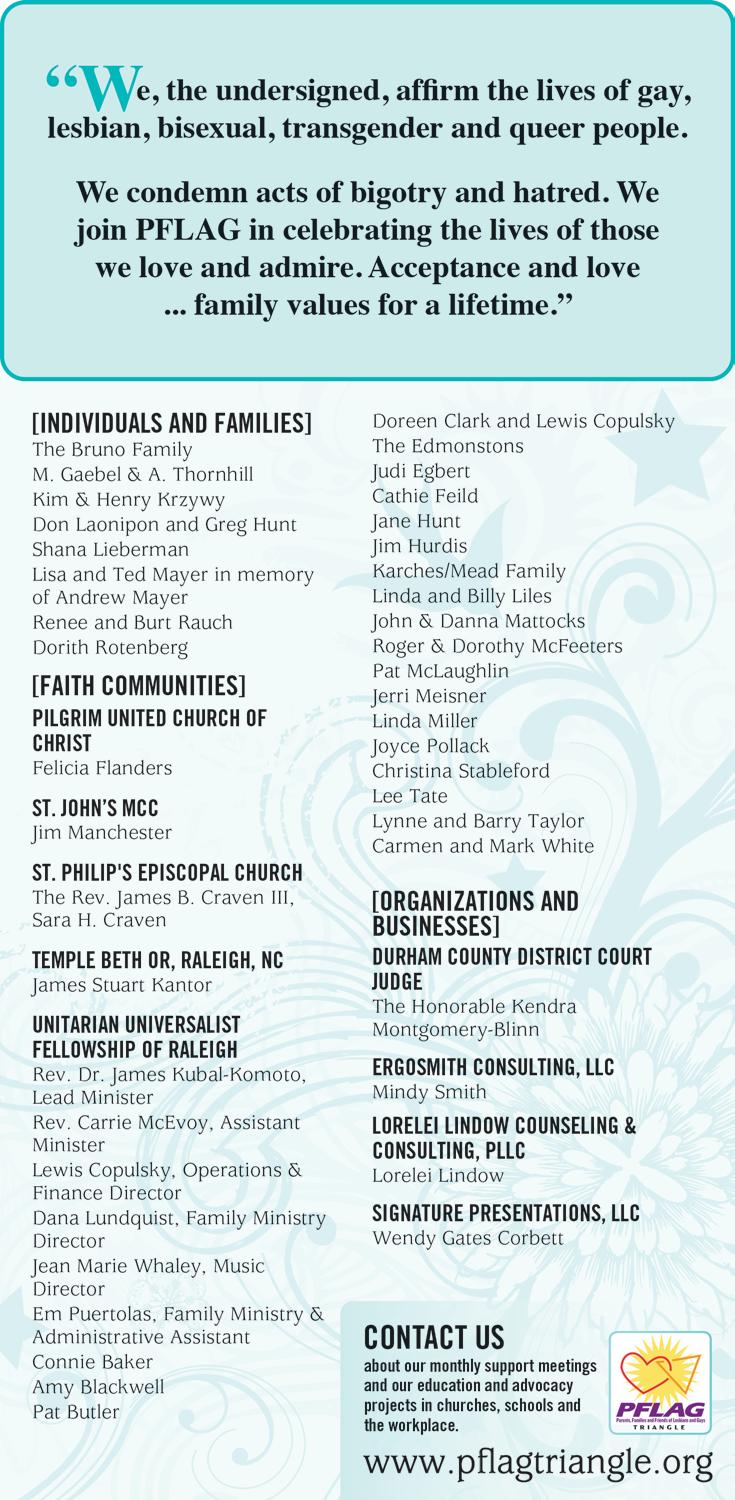
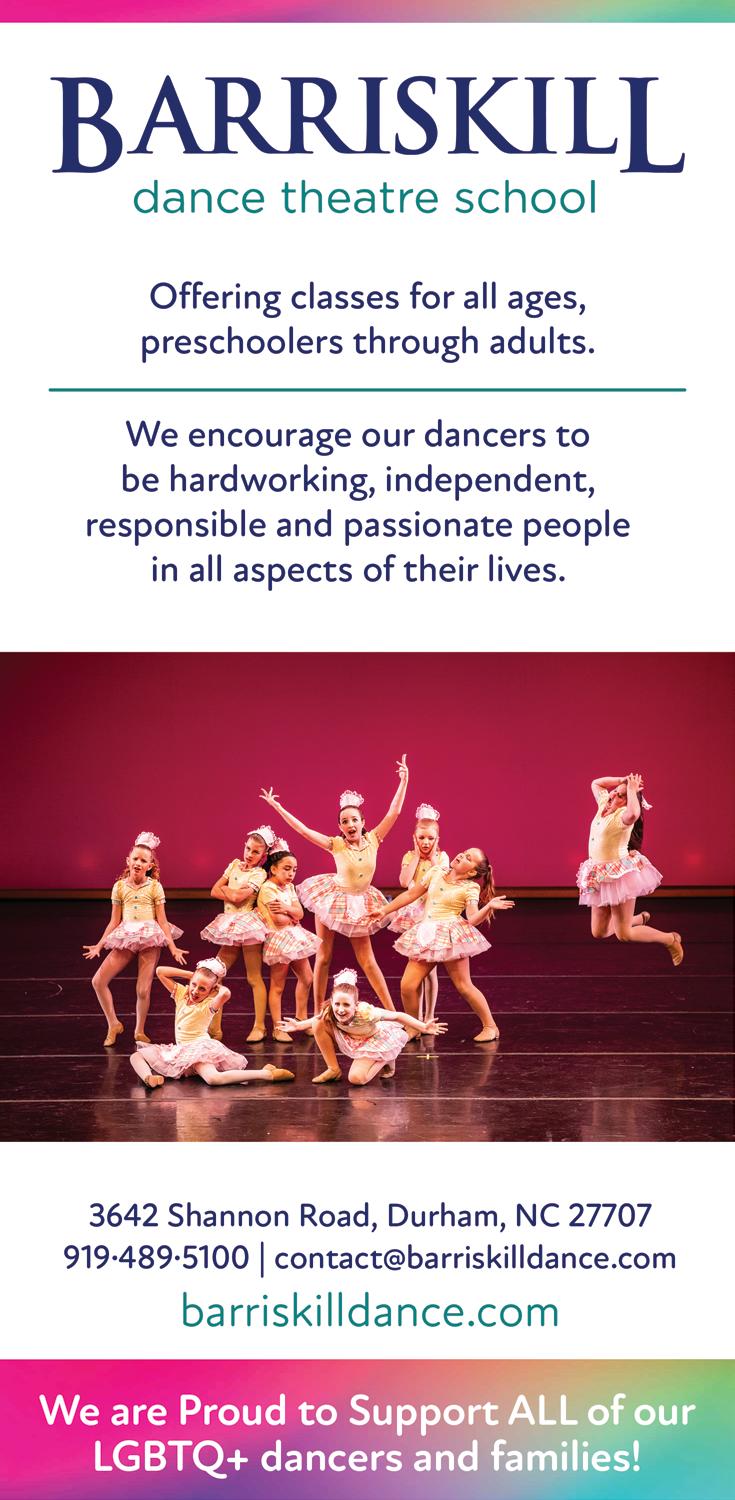
than dreams and diplomas. They think they saving us, But how you saving the generation you insist on caging?
The kids can’t read, Mamas ain’t got enough money to make sure the babies can eat.
We got more liquor stores than libraries. But whitewashed policies lie and say BullCity is the place to be.
They tryna turn the East and the SouthSide turning to gentrification’s mistress
And to ease the mess Income reqs on the housing is “mixed”
But
We not tryna rent the block that belongs to us It seem folk only wanna see us get it back in blood. How many babies we gone have to bury?
And how much blood gone have to stain the streets for MedCity to make a miracle out the mess it’s bore?
I’m so tired of the “Black Excellence” residing on the plantations, White morals whipping Black leaders into captivity. They put a highway through our Mecca to make it easier for folk to get to massa. They tryna coerce us grateful. I know this story. In the end, We never win.
When they ask, ”Who’s gonna save the babies?” I remind them that,
We have always been our own saviors. Grandmamas prayers the best medicine, community, the safest haven.
We built schoolhouses from scraps of paper and graduate this life with the highest honors, rebuilt the homes they snatched our fathers from, made delicacy out of desecration, paved our own Wall Street when they said we weren’t worthy of theirs.
We are the only people in this world who hold the fires used to burn us down, to light up our skies.
When they ask, “Who is going to save the babies?” We must turn on the God in ourselves to run the kingdom of our birthright Cause we have always been all we got. W
A Q&A with Taj Scott, 15, the chessplaying, manga-reading, Durham-loving cool kid
BY DESMERA GATEWOOD
GATEWOOD: If you could describe Taj to a friend in the third person, what would you say?
TAJ SCOTT: Taj is this eccentric young dude. He’s talking a lot all the time except when he’s not. He’s into fighting games, some would say to the point of obsession. He’s not a half-bad chef as well. He’s trying to learn how to skateboard but in being honest, he’s pretty bad as of right now. He’s pretty smart most of the time. Pretty big anime and manga nerd—kind of a nerd in general! Born in Durham.
What music and art are you into?
SCOTT: I’ve been listening to a lot of this artist called Misc—short for Miscellaneous. He does rap and hip hop in the style of MF Doom. I also love this band called OKPOP—it’s a K-Pop band. I like them, and I don’t really like K-Pop usually! It was started by a Youtuber, and he kind of stopped doing YouTube vids but they still release music.
One of my favorite Mangas is Jujutsu Kaisen—the translation is Sorcery Fight (which doesn’t sound as cool when it’s translated in English of course).
Who are a few people in the community who inspire you?
SCOTT: My mom who is super super awesome inspires me! Also, I participate in a young chess club called the Bowties Kings Chess Club, and Mr. Glenn is a pretty cool dude. One of the core tenets is effective communication with each other. We have a whole ritual where we talk about how our week has been and we meditate. It takes what could be an ordinary chess club and it expands on it.
Then there’s my mom’s friend, Mr. Derrick, who does really cool projects, photography. And I help him around the studio. He’s really cool!
What makes Durham special to you?
SCOTT: I love our specific community. The people who make up Durham specifically. So many amazing people and groups, it’s absurd! Not to mention the community storefronts. Things that aren’t big name brands, and they’re run by super cool people who sell super cool stuff. Downtown Durham is so beautiful at night. Durham is beautiful overall. And I feel safe in my community. I know the subset of Durham that I participate in is very open-minded and com-
municative when it comes to different subjects. People aren’t afraid to say what’s on their mind and they speak up if they feel something’s not right. I would say I feel safe here. I’ve lived in Durham my whole life—as far as I’m aware.
Do you think Durham is a good place for queer people?
SCOTT: I believe Durham is a very welcoming and open community. I feel like my identity has always been welcome—my Blackness and my queerness. I feel like it’s a safe space. In the parts of the community that I interact in, I feel like people are accepting.
Just doing stuff like this INDY [interview] makes for a much more welcoming and open community, as opposed to communities where things like this conversation wouldn’t exist. At least 80 percent of the people I know fall on the queer spectrum somewhere, and I know a lot of people!
How do you define queer?
SCOTT: An overarching name for the LGBTQ+ community. I don’t say it that much, I usually just say whatever preference I am aware of, or I just don’t mention it.
Queerness is special because it’s large and ever-growing. There are differences and similarities under the queer definition. This one word holds so many things under the umbrella. Two people can be attracted to the same person in different ways for different reasons and have different ways they see themselves and that person and still be under the queer umbrella in different parts of the spectrum.
If there’s a Durham kid who is queer, who may not be as comfortable with who they are, what would you tell them?
Don’t be afraid to find your community. There will always be a population and a place where queer people exist. Sometimes they may be more hidden or exposed, but don’t be afraid to go find them and connect with people who are having your same experience. People who can probably give you better advice than me. People are afraid to ask because they think they’ll react. But go a little further and maybe push yourself a little more to find the people like you. W

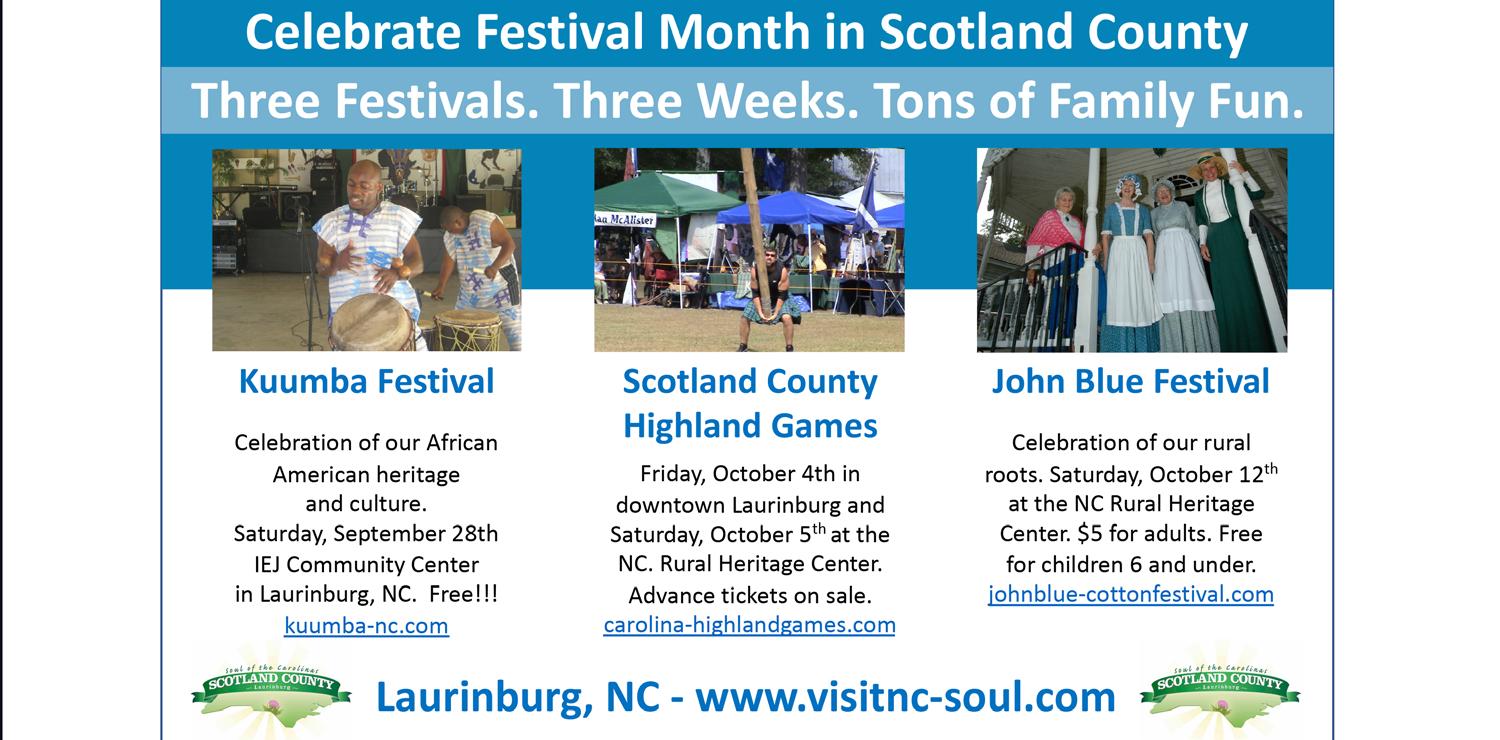
A Q&A with Assata Goff, 24, a visual artist from Durham.
BY DESMERA GATEWOOD
The year was 2000.
I was a nine-year-old in the fifth grade. My mother and I stepped onto an elevator alongside my EK Powe Elementary School art teacher at the time, Malcolm Goff; Afiya Carter, and their baby girl. We were taking the elevator up to a Durham school board meeting where my father had called together a group to protest the notorious out-of-school suspension rate that marred Durham Public Schools’ reputation.
My mother looked down at the couple’s baby.
“Wow, that is the most beautiful baby I’ve ever seen!” she said excitedly. (Funny enough, my mom’s own baby was standing right beside her). But, a beautiful baby, she was, like a live doll, but glowing and smiling as if basking in the love surrounding her.
“What’s her name?” my mom asked.
“Assata,” Afiya answered.
Since then, I witnessed beautiful baby Assata evolve into a now 24-year-old Durham institution. Although I’d seen Assata grow through the years—facilitated panels where she spoke, taught workshops where she participated, admired her student activism, marveled at her artwork, chopped it up and shared space with her parents—I didn’t have a way to contact her directly. So I asked Afiya to reconnect me.
As fate would have it, Afiya told me her firstborn, Naeemah Kelly, would very soon have a child of her own. Afiya and Afiya’s wife, kynita, were days away from welcoming their first grandchild.
How sweet it is that, when I finally connected with Assata on Zoom, she sat in a hospital room next door to her sister and her then day-old niece, Goldie, who is nicknamed Golden Raye. This theme of family and ancestry is woven through Assata’s art and identity as a young wielder of queer magic in Durham.
GATEWOOD: Where are you from?
ASSATA GOFF: Durham, been here my whole life.
Define art.
GOFF: Art is expression, a way to explain purpose, change, evolution, whatever is ruminating in your mind, heart, and soul. Artists use things that weigh on them: love, their mental health, their community, or their change and journey. For me, it’s all of those, a form of expression that declutters everything in my head, a way for me to put dreams and
ideas that make things more tangible than [what] you can see in your mind. It’s something you can show others, how to dream and express. Artists can pull that out of people.
Are there any artists who helped to pull it out of you?
GOFF: Two exhibitions changed my art style and how I think about art and life. The first was when I went to New York for a summer in 2017. I was 16, and I went to the Cooper Union summer art intensive. I studied animation there and spent the whole summer with my grandparents, who lived in Brooklyn. My grandparents sent me to an exhibition at the Brooklyn Art Museum [called] “We Wanted a Revolution: Black Radical Women, 1965-85,” with works by artists and revolutionaries [including] Elizabeth Catlett and Faith Ringgold.
All of these artists were making multimedia art. They weren’t just expressing the reality and the struggle of the Black woman experience at that time but also their dreams and hopes for the future. For me, it was like, ‘Oh shit, I’m living in what they imagined.’ That was an example of the power of art, how they were able to express their past, present, and future at the same time.
In New Orleans, Wangechi Mutu, a multimedia artist, does performance art and sculpture and artifacts. She’s brilliant. I’m a person who works heavily against perfectionism and I need to control my timeline of life, and there’s a very specific way that I want my life and timeline. Every time I get in that mode, there’s something that reminds me that
time isn’t real. I already have what I need to continue making. And it doesn’t have to be from this capitalist lens to create, create, create. And in the depth of [Mutu’s] work, oftentimes I think [about] that.
One of my mentors, Michelle Gonzalez Green, who passed away, [would say], “What would you create if no one was watching?” And I would say what I’m doing right now. Now, I wouldn’t say that. Because you can’t put people’s negative perceptions of you in your art. For me, seeing Wangechi’s exhibition really grounded that thought. Create and take it further. Whatever this deep and powerful emotion, thought, and idea. Whatever you are creating, take it further. Let that vulnerability shine through. That’s something that we miss in this life. That vulnerability. That’s why that work stuck with me and what spoke to me about her work.
You talked about how the artists in “We Want a Revolution” also drew inspiration from their own hopes for a Black feminist future. Does your art draw on anything that you hope for for the future of your identities—your Blackness and your queerness?
GOFF: Yes. Recently, my work has been taking a shift. But it has always been around my identity, especially my “I Am An Ancestor Too” exhibition. That was all self portraits, it looks like what I want for the future of myself. Everything I want for myself, I want for others. I’m of the belief that everyone should find that peace and love within them-




selves and ultimately within their lifetime. Much of that also comes from accountability. That exhibition was about finding that peace within themselves. That’s my personal hope for the future of us as beings in this society that we have been dropped into.
My work is moving into more of a societal hope to sustain access to things we not just need but what we need to thrive. This idea of eco-grief and specifically, through a Black and queer lens, of the things that have been systematically taken away from us when it comes to the environment. Black folks have experienced a very specific type of grief when it comes to the environment. Especially queer folks. Having those identities stripped from us, because this system is not what our ancestors developed. Including our gender norms and expressions and those limitations and the stripping of connection to the environment. And the stripping of indigeneity on the connection of our land. That’s a very specific grief we hold. And so my work has been exploring that and thinking about how we move and use the idea of Sankofa to acknowledge our past and bring those lessons and knowledge into the future—a future that is eco-futurist and solar punk. All of the sustainable and beautiful things. Coexisting with plants and animals type of things.
Your sister just welcomed a new baby girl. What do you want her to see in Auntie Assata’s art?
GOFF: I want her to see that there is hope and that is hope. She has been brought in during some tough and interesting times socially and politically. But through all of that is solidarity and hope and imagination. And the work that we do to make that tangible for her and for ourselves and for our ancestors.
How has the Durham community helped to nurture you as an artist?
GOFF: I have to bring it back to my parents, grands, and great-grands. My great-grands instilled in my grands that community work is important. Everyone should be doing something to engage and help their community. My grandmother instilled that into my mother as well. Both of my maternal and paternal grandparents have been very involved in reshaping Black experiences. And my mother always wanted me to be in things and part of things that I may not have even have wanted to be [laughs]. I’m quiet and an introvert and I don’t want to be around people all the time. But she instilled in me that being in the community helps give you a strong sense of who you are. Durham has so many amazing programs for youth and development. I was a part of the Indigo Generations with Alexis Pauline Gumbs. I was also in Sangodare’s Film. I was in Collage Dance Company, and Satos, the baby version of Collage. I did Capoeira when it was at Weaver Street. I was a part of community gardening at my school. My dad

was an art teacher, he did film and art-making summer camps. I was in lots of plays and I had amazing mentors like Michelle [Gonzalez Green] and Baba Chuck Davis. I think all of those people and programs, I was still able to be in my little shell and still it was OK and beautiful, and also it was OK to step out and explore identity. Durham has fostered and helped me to move into my identity in a unique way that I’m very grateful for.
Can you tell us about the self portrait piece?
GOFF: It is very layered. It’s a piece of identity which is complex. This portrays me and not-me, simultaneously. I realized this is my face and who I am, and all of these features are physical features in my ancestry. My eyes, nose, curly hair, all of these are things in my past and what make me uniquely me in the present. That goes for my identity and my personality. I take all of these things and people
and loved ones, and that I am all of them. Because of that, I am me.
It was also a piece of getting over inadequacy that is very intentionally placed upon us as young adults specifically. And that sense of perfection, because if there is this unattainable way of being, it’s almost impossible to reach that standard while also maintaining sanity and health. I’m always very hard on myself, and it’s realizing that if that isn’t how I interact with others, I don’t want to internalize shame and homophobia. I wouldn’t do that to other folks. So the mirror part of the piece is, if I can see the beauty and importance of others, of random people and my community, family and ancestors, my siblings, then I can always bring that to myself and vice versa. That was that piece— very layered and emotional. It felt like the beginning of my current journey of radical self acceptance and expression. W
This interview has been edited for length and clarity.

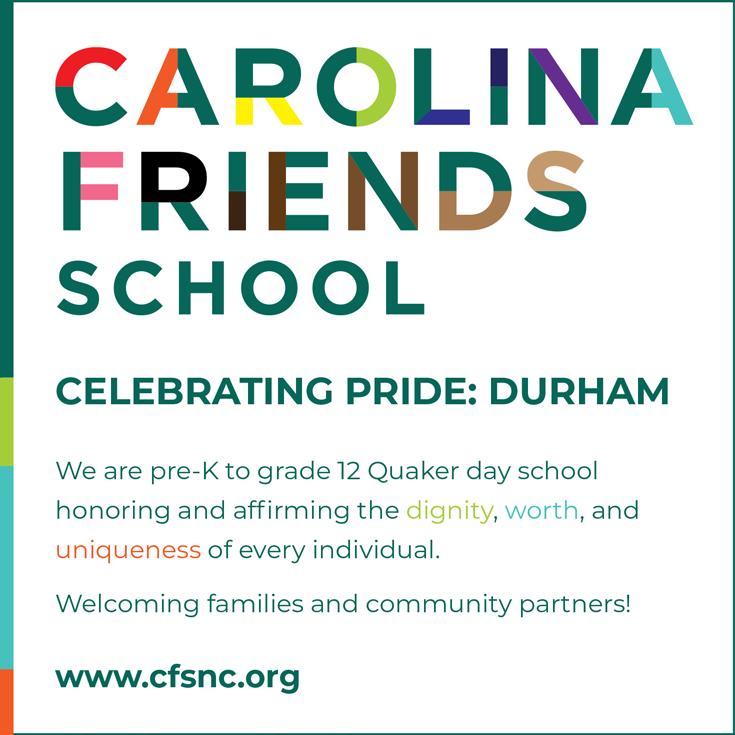


SONG LYRICS BY JAMMTHANUBIAN, 23, LGBTQ ALLY
Not a lot who know me, very few who use my first name. Very few who knew the monicker ‘fore it incurred fame Funny, guess I always thought the streets would bring the worst pain.
On the contrary, I been struggling with worse things. I carry myself concealed.
All the things I sit on, Is kindling for a hit song. The piece de resistance, Is how I learned to flip losas.
Momma couldn’t save me from the pitfalls. Expression, round my way, it came from stick talk. These bars help with suppression, Candy coating my repression.
It’s hard to trudge my way through all these days, if we’re making confessions.
My brother and I aren’t speaking. I can sense that he’s stressing, But I’m stuck on beef we could’ve chopped, where’s the delicatessen?
But I couldn’t peep the lesson, So I chose to forgo speaking.
In an instant, I was breathless. Out the blue, my bro conceded.
Lucid dreaming, heart is heaving, Emotions growing effervescent.
Ugly grieving,
Guess I always thought we’d have another session. Truly, what is a wasted breath?
Took a lot for gifted when the distance was a couple steps I always thought another set of downs would be guaranteed.
We were running the game, now they’re calling in the special teams

By Gohi, age 24
All this time, petrified the streets would send my brother up,
I’m on the frontline, ready to make sure who ever slid slept. Come to find it was just his time, and he had done enough. Now I pour a few adornments to earth, until it hurts less. W
BY LELA SMITH, AGE 9
On a bright sunny day, Rain woke up to everybody in the living room. Except for Rain’s mother Lilac.
“Orchid!” said Rain.
“What?” said Orchid, making a face at Rain.
“Can I borrow your phone, please?” said Rain.
“Why?”
“Just ‘cause,” said Rain, making a worried face at Orchid.
“I want to know why first,” said Orchid.
“Stop fighting! Orchid, just give her the phone,” said Money.
“But Dad!” said Orchid.
“No buts!” said Money.
Orchid groaned then shoved the phone into Rain’s hand. Then Rain started dialing numbers in the phone.
Then Lilac came out from the deck.
“What happened this time?” said Lilac.
“They were fighting over a phone,” said Money.
“Girls! I cannot believe you. You guys were fighting over a phone?” said Lilac.
“I know!” said the girls rolling their eyes.
“Go to your room! Give me your electronics, too,” said Lilac.
“But mom!” said the girls.
“Go!” said Lilac.
The girls stomped up to their rooms.
“I can’t stand those girls,” said Money.
“Neither can I. Literally a phone, like what, it’s just a piece of metal,” said Lilac.
“Calm down,” said Money,
“OK, I’m sorry,” said Lilac.
“It’s OK, I think you should say sorry to the girls,” said Money.
“OK, I will.”
So Lilac goes to the girls’ room and opens the door.
“The girls aren’t here!” screamed Lilac. Money ran to the room.
“What! They must have snuck out!” said Money.
“We need to find those girls,” said Lilac.
“Don’t worry, we will,” said Money.
“I’m not worried,” said Lilac.
“OK, we still need to find those girls,” said Money.
“Okay, I’ll help you find our kids,” said Lilac.
So Lilac and Money got in the car and started calling their kids’ names.
“Orchid! Rain!” said Money and Lilac. They shook their heads and called again.
“Orchid! Rain!” But this time, Orchid sees something. So they pull over and jump out the car.
“Oh, hi Mom. Hi Dad,” said Orchid.
“I missed you guys so much,” said Rain.
“You girls are in so much trouble! But we missed you guys, too,” said Money.
Then they got in the car and drove home.
“Group hug!” said Rain.
“You guys are still in trouble. So you’re grounded for a month.”
Then everybody laughed. The end.W
BY AIYANA SMITH, AGE 11
I am Me, that’s all I want to be I will never be shy I am able to fly
Because I know I am me
You are you and I am me that’s all we ever need to be
I love me and you love you we are all we need to be! W


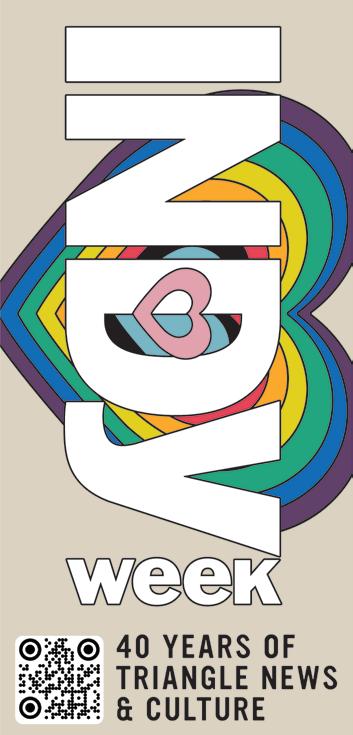
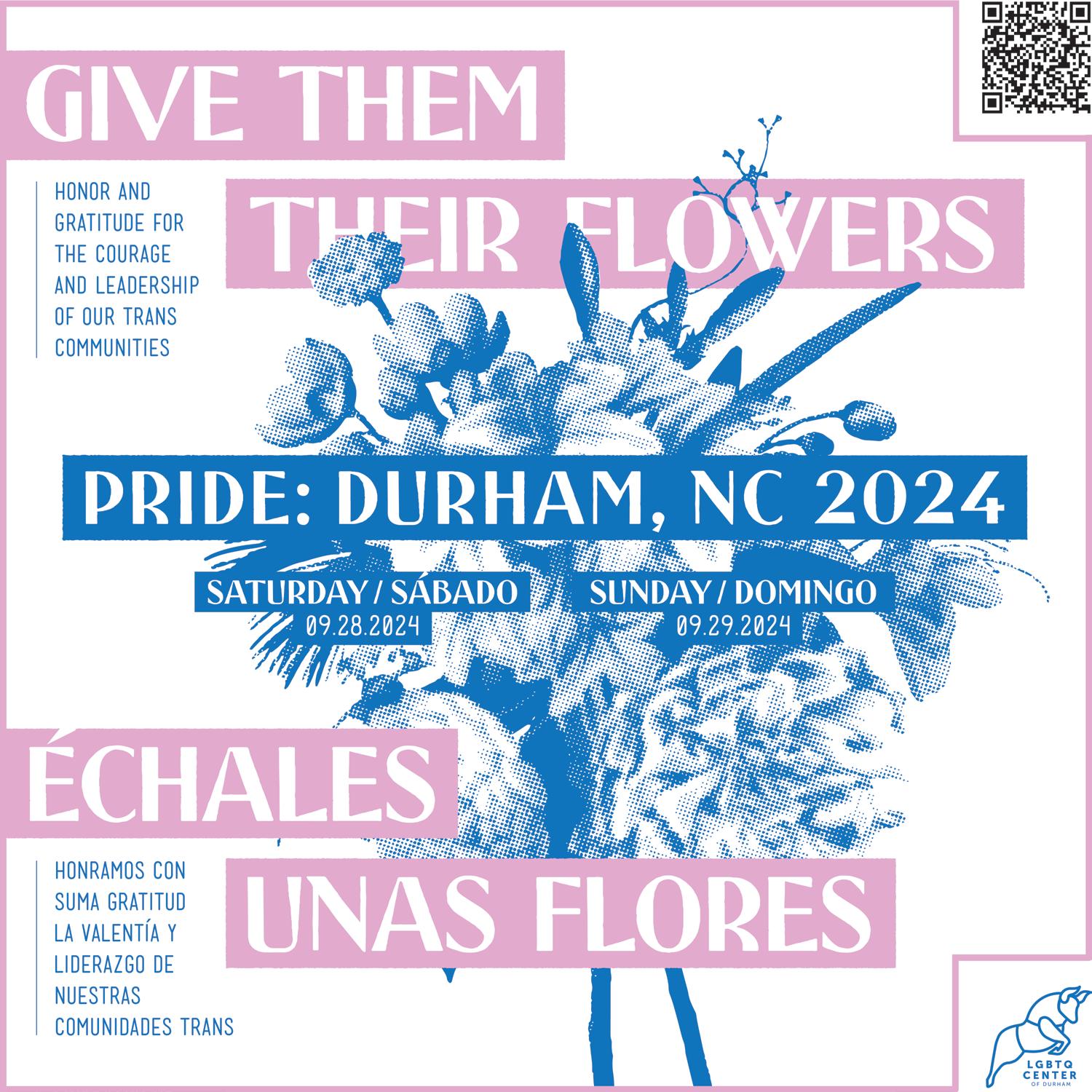
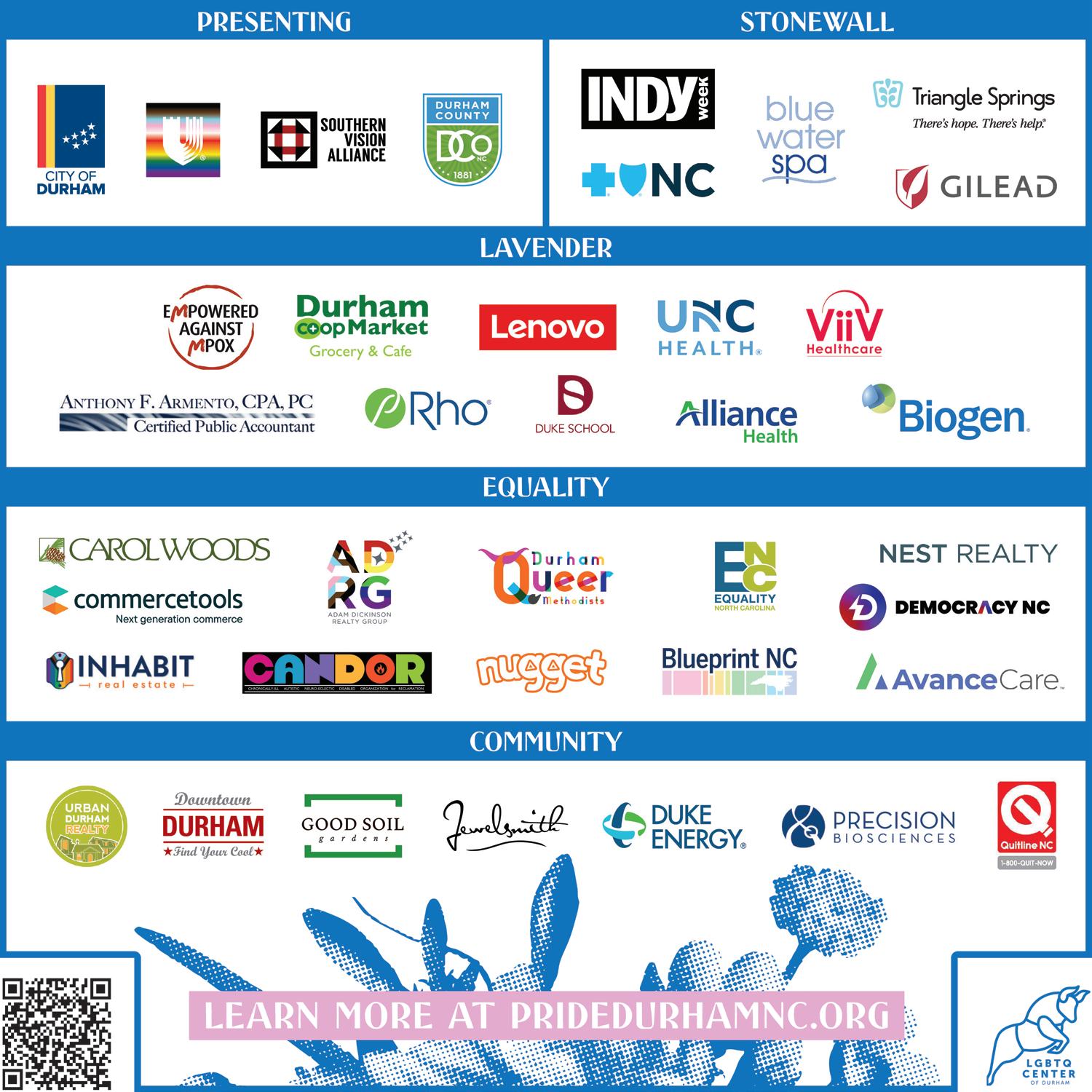
With robust membership and programming, the Triangle Pride Band models a joyful, inclusive way forward.
BY GRACE YANNOTTA music@indyweek.com
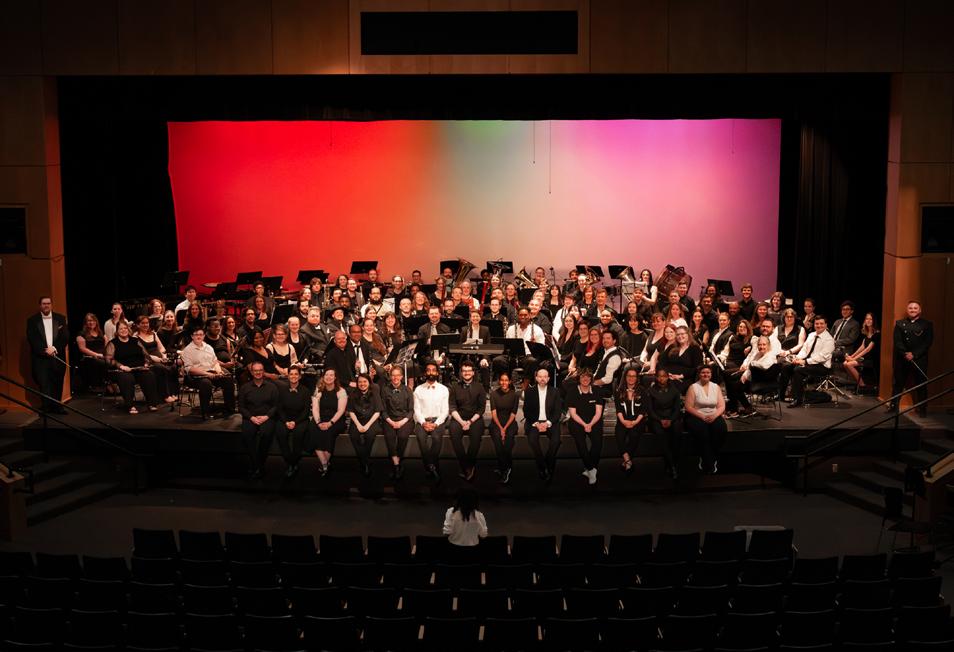
When Adrian and Bee Powers moved to Raleigh from Tennessee in April 2023, they were eager to get involved in the community. In search of an activity the couple would both love, Bee took to perusing queer community groups on Facebook.
There, she encountered the Triangle Pride Band, a sprawling, inclusive, community symphonic band.
“We’ve both been in band since we were in middle school, high school,” Adrian explains. “We met in band in college, so as soon as we saw [Triangle Pride Band], we were like, ‘Oh, yeah—we’re doing that.’”
The couple promptly dropped in on a rehearsal and, right off the bat, say they felt like part of the band.
“It was amazing for us to be so welcomed in,” Adrian says.
The community element wasn’t simply a good first impression: Not even a year after joining, Adrian went through top surgery, a chest reconstruction procedure meant to enhance one’s gender expression. At the time, he was a percussionist, a position that involved repetitive arm motions—movement that was sure to disturb the healing scars on his chest.
He made the decision to step away from Triangle Pride Band for that cycle, but soon discovered some of the pieces the band was performing had piano parts, an instrument not usually included within the band.
“They let me be on one song that cycle on piano, just because I wanted to be a part of it.” Adrian says with a smile. “There was a fluidity there, an understanding [of
what] I was going through.”
The weight of being queer in North Carolina can be heavy. Our state is the birthplace of the first modern bathroom bill controversy, the ricochets of which continue to be felt nationally. The deeply homophobic and transphobic rants of gubernatorial candidate Mark Robinson can be heard in clickbait form, over and over again, in commercials this election season.
It can be easy to forget that being gay or gender non-conforming is a joyful, euphoric thing. The Triangle Pride Band, though, offers enduring proof of the beauty of queerness. And proof there is! Hear the screams of the crowd from one concert, last summer, in which the parent of a band member dressed up in full Darth Vader cosplay during a Star Wars tribute. Or, if you’re of the more statistical disposition, consider the 300,000 likes on TikTok for the band’s rendition of “Sleigh Ride.”
Eight short years into its reimagined state, the Triangle Pride Band has skyrocketed from 30 members to 120 —a quick rise that has made other Pride Bands Alliance curious about the band’s key to success.
“Bands from all over the country are being like, ‘Tell us how you’re getting engagement the way you are,’” artistic director Alex Alberti says. Beyond the general symphonic band there is also a jazz ensemble, a color guard, a choir, and various smaller group ensembles—and, to offer an accommodating entry point, no audition is necessary.
The Triangle Pride Band has a reputation for becoming what the community needs it to be. It began in 1987 as
the North Carolina Pride Marching Band, a lesbian drum corps entrenched in Latin and African-style percussion. It had a rebirth in 1997 as a standard marching band and then, in 2016, became the Triangle Pride Band when other LGBTQ+-focused ensembles seemed to have fizzled out.
The support that the Powers experienced extends past rehearsals and into members’ personal lives: One long-time band veteran and member of the board set up a meal train for Adrian during his recovery, he says.
“We had too much food!” Adrian says, recounting how band members he hadn’t yet met dropped meals off. “What an amazing complaint to have.”
Adrian had felt radically accepted by band members, unexpectedly so, and says he found himself eager to do what he could for the organization that had welcomed him with open arms. With years of undergraduate choral experience under his belt, Adrian reached out to Alex Alberti, one of the band’s artistic directors, and asked if there was interest in a choir. There was, and the Triangle Pride Band’s choir was formed.
Chuck Stanley hadn’t picked up a cornet in 30 years, prior to joining the Triangle Pride Band. In 2022, he saw a Reddit post from Alberti advertising a new band cycle. He jumped right in. Soon after, a conversation about introducing a jazz band popped up in one of the ensembles’ GroupMes. The group agreed it was a good idea, leaving only one question: Who would lead? Stanley was a shooin. He’d been playing jazz since he was 12, and like Adrian, studied it while in college.
“There was a chance, an opportunity, and a need,” Stanley says. “At a time when jazz clubs are closing all around the Triangle, very few of them are opening, and they’re having trouble staying open. The community is looking for it.”
The jazz ensemble officially started in the spring, and by the summer, it had climbed to around twenty members.
“When I joined that September, I immediately felt welcomed,” Stanley says. “I felt like I was a part of something … [I felt like] I’ve got to give time, money, and make sure that this whole thing succeeds.”
The constant external expansion and development, the internal growth and support, would not be possible without Alberti. He wears all sorts of hats—he’s a composer, a judge for the International Competition for Collegiate A Cappella, and is in a local a cappella group himself, on top of maintaining a full-time job in education technology and having been the creative director for
the symphonic band since February 2020. Yes, since that February. It could have been a grim story, but Alberti’s strong, exuberant positivity defied potential pessimism. Stanley matched his energy with a softened wisdom and devotion to his peers.
When asked about starting his position at the same time as Covid turned everything upside down, Alberti expressed to me how fun it was to meet up masked, outside. “We’d play through stand tunes, like pep band music. We also had a color guard pop up and be really popular at that time!”
When asked about the withdrawal of RuPaul’s Drag Race star, Stacy Layne Matthews, from their summer concert due to an injury, Alberti replied, “We are excitedly having her rescheduled for next June, we know she’ll be a blast in emceeing and performing numbers to the show as well!” Stanley picked up where he left off, adding that her absence, while sad, allowed a member of the band, Franny Starlight,
to take her place and celebrate truly local drag.
And, when Alberti brings up the increased toxicity that trans members of the band are facing in the outside world, he doesn’t linger on the fear long.
“Members of the trans community feel like they can come and be themselves without any explanation,” he says. “You come in and you say, ‘This is me. These are my pronouns,’ and everyone, excitedly, validates that person’s identity and lifts them up.”
“There have been members who have decided within the safety of this group, they were able to make the choice to change their pronouns,” Stanley adds.
Even if you’re not a performer with Triangle Pride Band, it’s a great time to be a fan. Triangle Pride Chorus has its second-ever concert, “Let Me Listen: Stories That Connect Us,” on October 26 at White Plains United Methodist Church and tickets are available now! The sym-

phonic band and the jazz band both have performances open to the public in December—keep an eye on their social media for more information. Their “Slay Ride” will be making an appearance, and fans will be for sale in the lobby if you’re not bringing your own.
Beyond that, next summer we can expect a collaboration with the pride of the NC drag scene, Stacy Layne Matthews, and for its 10th anniversary, the band is commissioning a world-premiere symphony on the wonders and whimsy of our beloved North Carolina.
Gay or straight, trans or cis, musician or supporter, the members of Triangle Pride Band hold their hands out to you and are ready to welcome. As the Southern cultural climate grows hotter and tenser, the Triangle Pride Band matches that fervor with their own exuberance, and with the volume of their music does their damndest to drown out the negativity. W
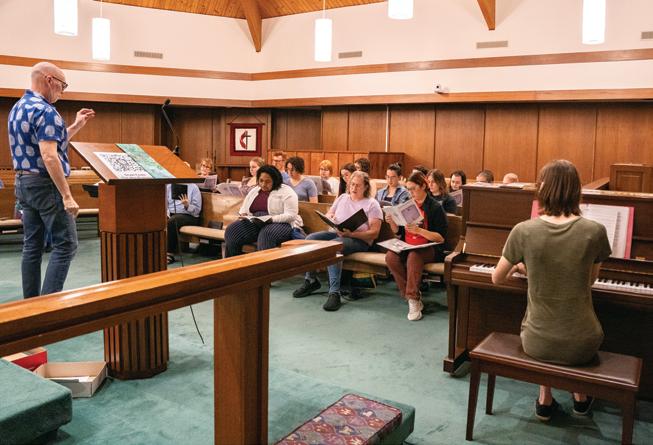
Durham’s newly renovated Pauli Murray Center aims to facilitate programming grounded in social justice and continue the late civil rights icon’s legacy.
BY AVERY SLOAN arts@indyweek.com
The first time Angela Thorpe Mason heard of Durham Civil Rights activist Pauli Murray was close to 10 years ago. Her reaction was one of confusion, curiosity, and complete awe culminating in a question: “Why have I never heard of Pauli Murray?”
At the time Mason was a contract curator with the Museum of Durham History, working on an exhibit on the history of the baseball card. Stuck in a rut, she visited the Scrap Exchange where a Pauli Murray exhibit was on display. The exhibit inspired the current project she was working on—and Pauli Murray also stayed with her.
“This is certainly a full circle moment,” says Mason, now the executive director for The Pauli Murray Center for History and Social Justice. “It’s wonderful that Pauli has stood on my shoulder now for a decade.”
The Pauli Murray Center for History and Social Justice, located in Murray’s childhood home at 906 Carroll Street, opened its doors to the public on September 7 following almost 10 years of renovation.
Built in 1898 by Murray’s maternal grandparents, the house was slated for demolition for many years, Mason says. A few different organizations oversaw the property until the center was established in 2012. Community support and fundraising—including a $1.6 million grant from the Andrew W. Mellon Foundation—have contributed to its rehabilitation.
Born in 1910, Murray was a pioneering queer lawyer, writer, priest, activist, and passionate scholar of gender, race, and equality. Throughout their life, Murray questioned their gender, changing their birth name of Anna Pauline to the androgynous Pauli upon graduating from Hunter College in 1933. They were repeatedly denied gender-affirming medical care. (In this story,
the INDY is using gender-neutral pronouns, per the Pauli Murray Center, though Murray’s family members also use she/her.)
Murray’s identity and interests were radically broad. Now, the Pauli Murray Center’s goal is to welcome people of all identities— and to make sure that everyone has heard of Pauli Murray.
The center is on the National Register of Historic Places, and Mason hopes it will be a generative space for the Durham community. People can come sit on the house’s porch, she suggests, or gather in the rooms Murray grew up in, pursuing work aligned with Murray’s visions. One group that frequents the center is the Affordable Housing Council, a group working to reimagine home models, that draws inspiration from Murrary’s legacy.
The center will also facilitate programming grounded in social justice, Mason says, and will continue partnering with different organizations to provide resources to Durham residents. One ongoing partnership is with the North Carolina Bar Foundation, which has helped provide pro bono services to members of the LGBTQ+ community.
“Pauli was so expansive that there is a point of entry for almost anyone to connect with Pauli,” Mason says.
Rosita Stevens-Holsey, Murray’s oldest living niece, grew up visiting Murray from Washington, DC. The nation’s capital became a meeting place for most of their family, and Stevens-Holsey says one of her fondest memories was seeing Murray with their guard down.
“I saw her put her feet up, smoke a cigarillo, smoke a pipe, which is not something she did often or probably in public, but she was a smoker like my mother,” Stevens-Holsey says of her aunt, who she says was a

lover of dogs and reading.
Stevens-Holsey would regularly mail letters to Murray, who would mail them back with red circles, correcting grammar and punctuation.
“It was a family thing,” Stevens-Holsey says. “They were always exceedingly interested in education, proper English, proper etiquette. But I was drawn to her, especially because of her brilliance.”
Both Stevens-Holsey and Murray were travelers. Stevens-Holsey has visited 49 states and 50 countries and, like Murray, travels to explore new topics and learn about different cultures. But while Murray’s travels took them all over, their family home in Durham has become the heart of their legacy.
West End, the historically Black and working-class neighborhood where Murray grew up, is rapidly changing, Mason says—making the responsibility to maintain the history of the home and neighborhood all the more important. The center is held in a land bank, meaning it is preserved, but Mason says parts of the neighborhood that aren’t in the land bank are being redeveloped.
Mason sees the center and the West End neighborhood as sacred space. Growing up in Edgecombe County, herself, and the descendant of enslaved people, the center’s history means everything to her.
“I think it’s really important to ground folks in the reality of what and who was
here,” Mason says.
Stevens-Holsey says she had what she considers her “Pauli Murray epiphany” almost a decade ago. It was 2016 and she’d traveled to Durham; at a church event, everyone shared stories about Murray.
“I became overwhelmed,” Stevens-Holsey says. “I’ve never been in a situation where someone, not only that I knew, but someone who was a part of my family, was held in such regard.”
Stevens-Holsey heard from people who personally knew Murray and people who were just influenced by their work. People came up to Stevens-Holsey asking to touch her because she had the same blood as Murray and shared stories of how Murray made them feel.
“I started having an out-of-body experience,” Stevens-Holsey says. “It just all came over me. I was amazed.”
Mason knows that with Murray’s legacy, there is also a great responsibility. She doesn’t take it lightly.
“It’s a space that I steward with great care, and it feels like a privilege to steward,” Mason says. She says she hopes the center will be “a center for history and social justice.”
“Not a museum, not just a historic site,” Mason continues, “but a place where we can leverage history to catalyze people to move contemporary social justice and social change work forward.” W
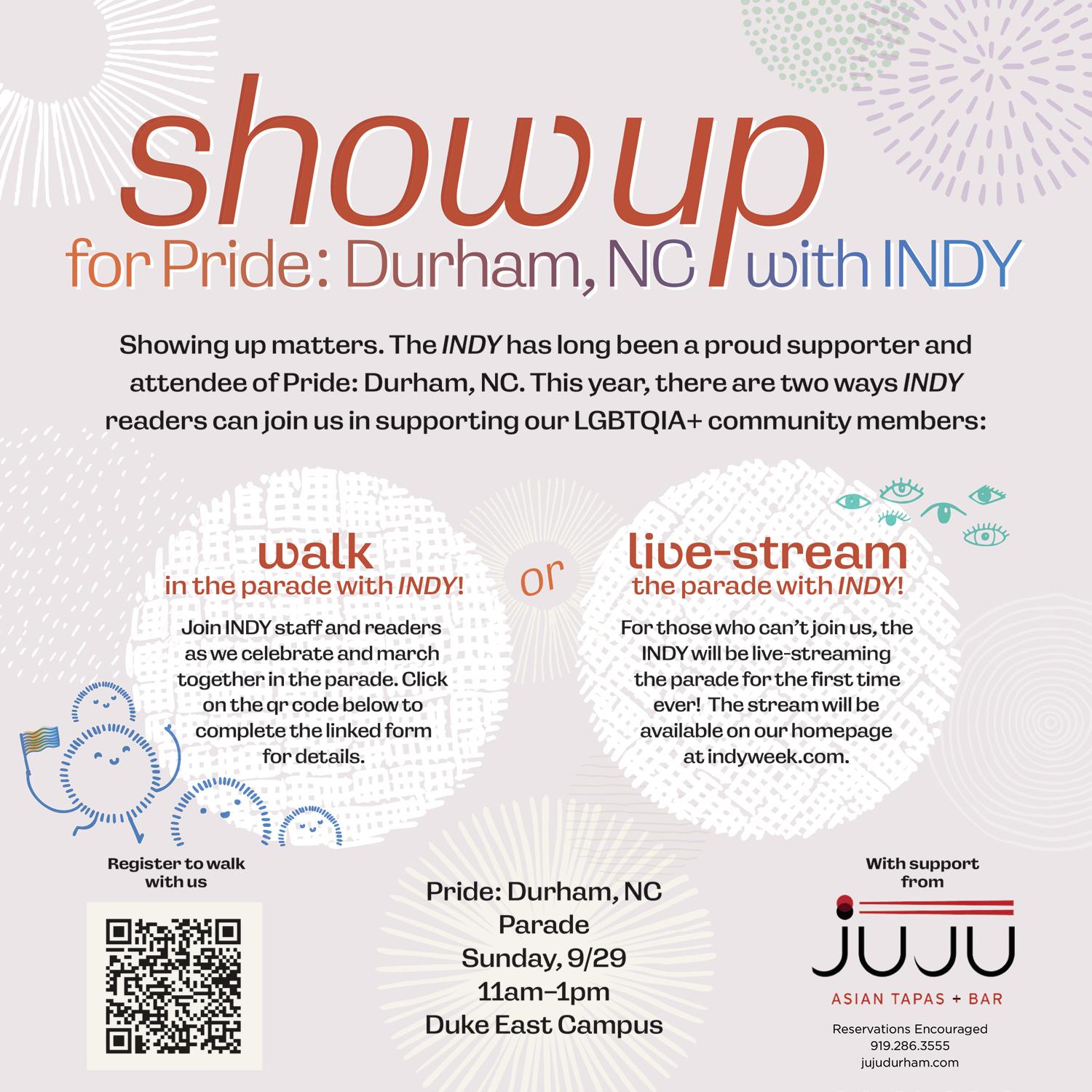

Three very different new spots—Delafia, High Dive, and Club ERA—enter the Durham nightlife scene.
BY LENA GELLER lgeller@indyweek.com
An unpresuming wine bar. A relaxing nightclub. An upscale dive.
Downtown Durham’s three newest bars are all a touch oxymoronic. More fun similarities: two of them are in basements, two are owned and/or bartended by sons of Durham’s Y2K fine dining scene, and none of them are centered around craft cocktails.
Here’s the lowdown on Delafia, Club ERA, and High Dive.
Delafia
Delafia owner Jesse Gerstl is surprised that more customers haven’t asked him what delafia means in the two months since he launched the wine bar on Roxboro Street.
“I thought every person would ask,” Gerstl says. He’s not mad about it. A hyperlocal slang term from the
Tuscan town where Gerstl spent some years as a child, delafia, pronounced “della feeya,” doesn’t translate very well, anyway.
“It’s something you answer a comment or a question with,” Gerstl says, nebulously, when pressed to explain. His rationale for using it as a namesake is primarily that “it’s a pretty word,” and a personal one.
“It’s something all of my friends back home think is hilarious—that there’s a bar in North Carolina named Delafia,” Gerstl says.
In short: it’s best if you don’t overthink it.
The same goes for most everything about Delafia, which opened this July in a white brick building on South Roxboro Street, on the fringes of downtown. The bar’s focus is natural wine—the farm-to-table version of wine, essentially, made on a smaller scale and with minimal intervention— which might seem “a little different and out there,” Gerstl
says. But you don’t need to be a connoisseur to enjoy it, and there’s no obligation for patrons to want to learn about what they’re drinking.
Delafia shares a building with a Pentecostal church and a tobacco store. Unlike Gerstl’s previous two bars—Peccadillo, in Carrboro, and Bar Lusconi, in Durham, which closed their doors on the same day in 2016 due to low foot traffic and financial issues—it does have signage, but it’s still fairly incognito. (Peccadillo was a speakeasy; the closest Bar Lusconi got to a sign was a business card hung from a string in the front window.) The space previously housed a barber shop, and every day, at least one person walks in asking for a haircut, Gerstl says.
Inside, Delafia is split into two sections. To the right, there’s a bottle shop and a few armchairs and to the left, a commanding L-shaped bar and a few tables. The bar side opens out to a small fenced patio. In all, the space seats around 30 people.
Gerstl says he designed Delafia so it could be operated by one bartender. That bartender is currently Adam Sobsey, a longtime INDY contributor who spent years bartending at fine dining behemoths Nana’s and the now-closed Magnolia Grill in Durham.
Sobsey is happy to talk your ear off about natural wine (“A bit of the myth of natural winemaking is that you just take the grapes, crush them, and walk away for six months; it’s actually much more complicated than that,” he says)—but his main concern is making sure the customers feel comfortable.
“We can talk about the pros and the cons of all these decisions, and the grapes, and the land, and where it’s from and all that,” Sobsey continues. “But at the end of the day, with wine, if you like it, you like it. If you don’t like it, you don’t. We pour until we find something that people love.”
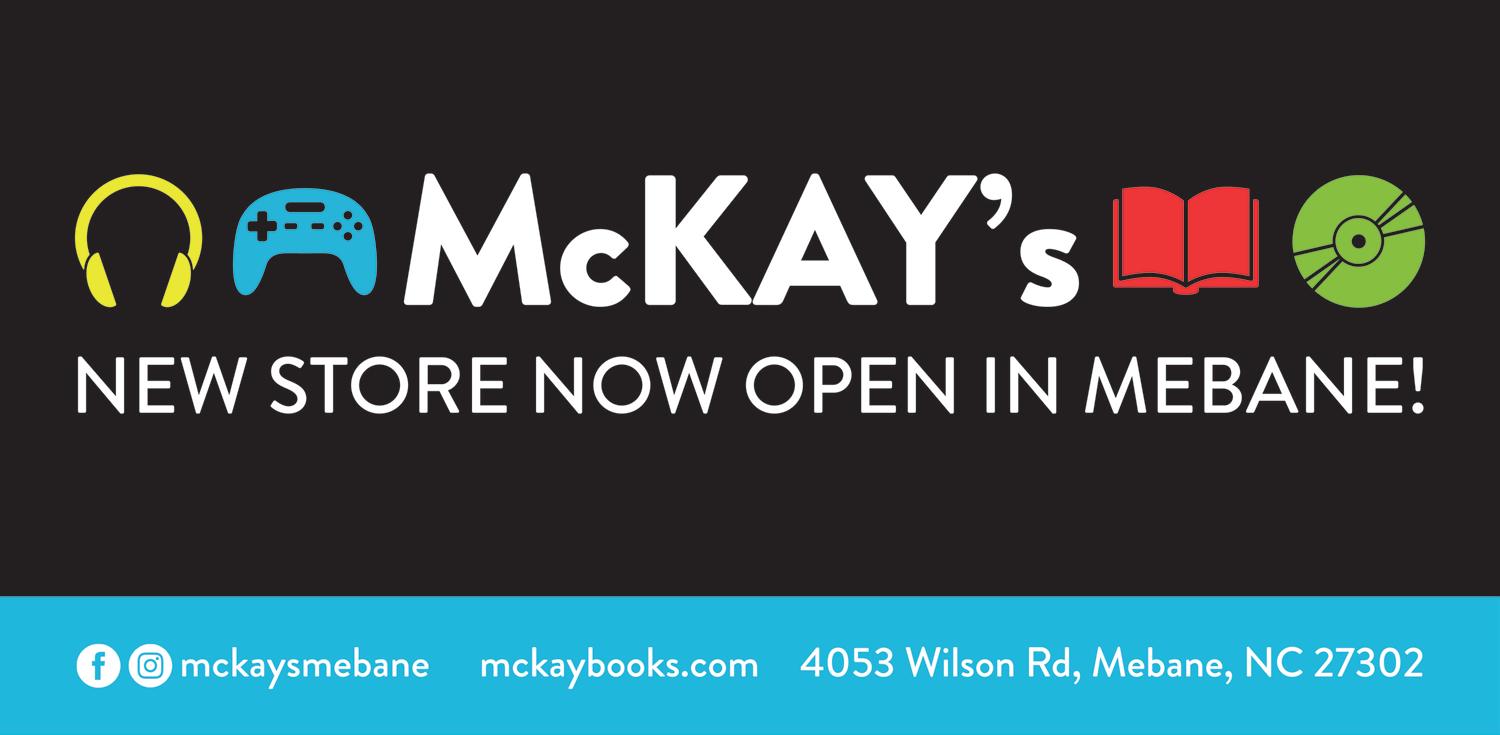

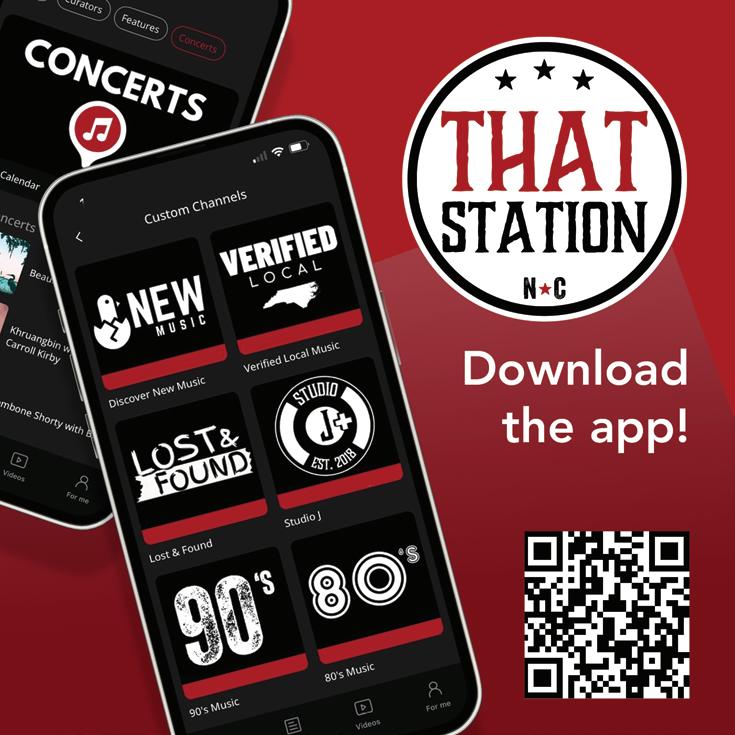
“High Dive,” as a potential restaurant name, had been bouncing around Daniel Sartain’s head for years.
“The original incarnation was a restaurant that was going to have a high-end menu—oysters on the half shell, half bottles of Franciacorta, ceviche—and then a dive side, with chili dogs and stuff like that,” Sartain says.
Then in April, the cocktail bar Glori closed and freed up the basement on Main Street that previously housed the bar-meets-arcade, Quarter Horse. The space wasn’t right for a restaurant, but was primely situated across the street from Sartain’s two existing ventures, Bar Virgile and Annexe. Being below ground, it made sense for a dive-y vibe.
“When I saw on social media that our friends at Glori decided to shut it down,” Sartain says, “that very day, I called the landlords—I knew who they were—and said, ‘I’ll take it,’ and negotiated a strong lease.”
High Dive opened in late August. As the name maintains, “While it is a dive bar, it’s on the nicer side,” Sartain says. “We have nice things.”
Indeed, the offerings at High Dive come across as basic but also polished and intentional. A short cocktail list is carefully spelled out on a letter board behind the bar instead of being scrawled on a chalkboard (or left unstated) in typical dive fashion. The nachos come with liquid cheese sauce from one of those movie theater machines—and housemade pickled jalapeños from a neatly labeled Cambro. The TVs mounted on the walls show sports matches and old movies in the afternoon (High Dive opens at 3 p.m.); after dark, all but one are turned off, and the one that stays on is queued to that YouTube video of a crackling fireplace. The foosball table, which Sartain bought from a guy in Indiana who also sold him the bar’s pool
table and CD jukebox, has been doctored by Sartain, a self-described foosball nerd, to deliver a more enjoyable playing experience.
High Dive sort of evokes those times when you clean your apartment so rigorously ahead of having company that you need to stage some clutter so people don’t think you’re a serial killer, or that scene in The Incredibles when Dash, gifted with super speed, tries to run at a believably average pace at a track meet. That’s not to say High Dive feels inauthentic—just different, a little endearing.
Sartain managed a slew of fine dining establishments in the Triangle—Magnolia Grill, Nana’s, One—before opening Bar Virgile and Annexe, both of which are fairly upscale. High Dive has been a big shift, he says.
“We are in FITFO mode,” he says, raising his hand. He puts down a finger for each word of the acronym: “Figure, it, the, fuck, out.”
“I wanted to give homage to those who came before us— all of the beautiful queer and trans people who were the foundation to creating queer space—and say, ‘We’re creating a new era, but with you in mind and standing on your shoulders,’” says Triangle drag queen Naomi Dix.
That’s part of where the “era” in Club ERA, the nightclub Dix launched in July, comes from. But the name also reflects the layout of the sprawling basement space the club occupies. Along the sides of the club’s long central dance floor, there are doors to different rooms, or “eras,” Dix says, with installations by local artists. Current rooms include a cotton-ceilinged, mirror-walled “cloud chamber”

and a “tree sanctuary” with vine-covered walls, anchored by a life-size tree sculpture.
“To be able to come into these different rooms and relax and get away from everything, but still feel the presence and the energy from the dance floor, was really key to me,” Dix says. “I think that’s something that’s missing in a lot of bars and nightclubs.”
A Durham native who spent a decade on the road as a drag performer, and who for the past several years has served as co-director of Durham’s Pride festival, Dix’s main goal in opening Club ERA was to create a venue with representation both on stage and behind the scenes.
“When I was traveling and doing drag full time, in many of these spaces that I was performing in, I saw the lack of representation when it came to those who were in charge,” Dix says. “These were men, and/or these were white men, that didn’t necessarily understand the depths of drag culture. They understood it from the perspective of an observer, but they didn’t understand it from the perspective of an actual entertainer and artist.”
In practice, cultivating an inclusive nightclub starts with the staffing, says Dix, who avoids hiring based on conventional ideas of attractiveness and focuses instead on representation across body types, skin tones, and gender identities when bringing on bartenders, go-go dancers, and DJs. When the people running the back end are valued, the rest follows, Dix says.
Club ERA is open five nights a week, with themed programming like “Big Kid Uno” on Wednesdays and Thursdays and DJ sets and drag shows on the weekends.
This month, the “pink velvet” room—a cozy, burlesque-inspired space that Dix says is all about sexual expression and providing a safe space for that exploration—will open just in time for Pride. W
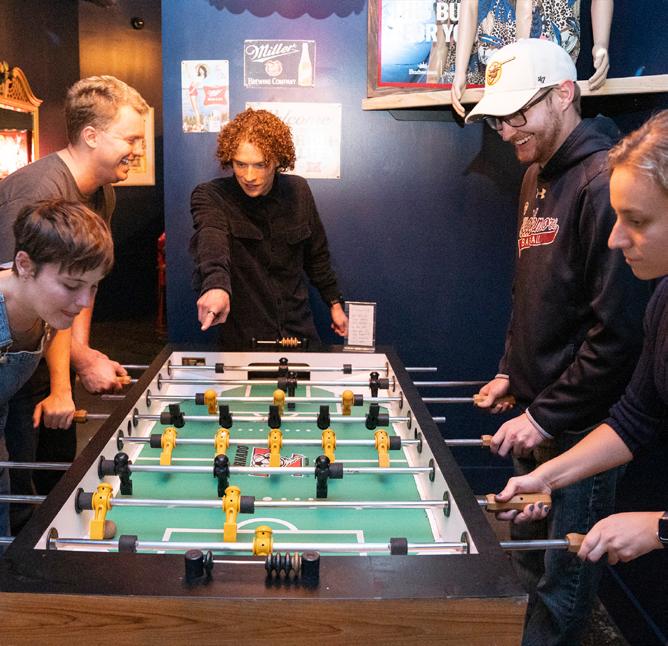





Making sense of the Tar Heel state’s political patterns and players with Chris Cooper.
BY CHASE PELLEGRINI DE PAUR chase@indyweek.com
Chris Cooper rarely struggles to answer an interview question. From the state’s first constitution to last week’s voter registration numbers, North Carolina’s resident political pundit is always prepared to discuss anything. But he felt like his answers to one question— what book would he recommend for a rundown on North Carolina politics? —were a bit outdated. So he wrote that book.
Cooper, the Madison Distinguished Professor of Political Science and Public Affairs and Director of the Haire Institute for Public Policy at Western Carolina University researches and teaches American politics with an emphasis on North Carolina and has been quoted about state politics in just about every major and minor news outlet in the country (including this one).
In Anatomy of a Purple State, Cooper tries to make sense of the patterns and players of Tar Heel state politics. His credentials as not only an expert but a teacher shine through as he mixes the accessibility of sports analogies (with a strong eye to the state’s love of college basketball) with witty turns like “accidental anathema of architecture” (to describe Raleigh’s unfortunate legislative building).
Cooper also knows his limits: he doesn’t pretend that this book contains all the answers and concludes it with a list of other books, journal articles, data sources, and even podcasts to look at for more information. His hope, he says, is that Anatomy of a Purple State can draw in anyone curious about how the Old North State works and, in part, help address “our increasing obsession with national politics
at the expense of state politics.”
INDY: Since we’re starting the school year, is there anything that you’re teaching your students now that you wouldn’t have taught, say, before 2016 or 2020? How has teaching politics in North Carolina changed?
CHRIS COOPER: There are probably things I’m teaching my students now that I wouldn’t have taught a month ago.
I would not have talked about unaffiliated voters as a key part of our state, but yet, that’s what most of our students are. Obviously, for good, bad, or indifferent, Donald Trump has changed the national environment, and that includes North Carolina. So the way I talk about ticket-splitting has changed—it’s a bit of a head-scratcher to think, ‘here’s a state that voted for Donald Trump and Roy Cooper on the same ballot, it wasn’t two different, you know, cycles or different tides, it was the same ballot.’
I talk about party switching. Tricia Cotham’s party switch really reinforced how much party switching matters, so I want to orient students to that. I talk about the council of state more than I used to as well, not so much because the environment’s changed but because I’m increasingly realizing that people don’t have a clue of the difference between the auditor and the treasurer, for example.
In 2017 the number of unaffiliated voters in North Carolina surpassed the number of Republican voters, and then in 2022 sur-
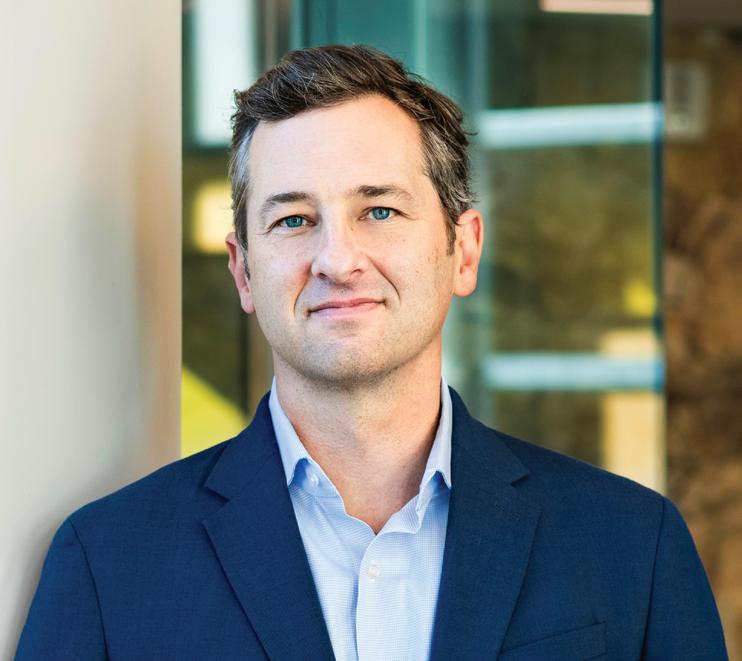
passed the number of Democratic voters. What does that mean for North Carolina politics?
It means a couple of different things. Most unaffiliated voters are not swing voters, but almost all swing voters are unaffiliated voters. A lot of them are shadow partisans—especially young people—they’re registered unaffiliated, but always vote Democrat or always vote Republican.
But if you’re going to find these swing voters, these people who split their tickets, they’re going to be in that unaffiliated category. I, along with some coauthors, tend to think of them as “unmoored” voters. If you think of a boat that is moored to a dock, it’s not going anywhere, right? So if you are registered D or registered R, you ain’t going anywhere. [But] if you are an unmoored and unaffiliated voter, that may mean that a big political tide has a better chance of moving you. And so in the short run, that’s what is important.
In the long run, I think we’re going to have a real problem in this state to get people to run for office. So, to talk about one of the chapters, unaffiliated candidates almost never win when they do run.
And so if young people are overwhelm-
ingly unaffiliated, and if you have to be a member of one of the two major parties to win, then I have real concerns about our democracy 20 years, 30 years from now when the pool of people to pull from is smaller than it’s ever been.
What could the parties do to make a stronger case to win over young people who are registering?
First, I think they have to think it’s a problem. If you talk to party folks and party officials and campaign people, sometimes they’ll dismiss this and I get why. Their paycheck and their goal is centered around the next election. And as you just said, you’re gonna probably go one way or the other regardless. In the short run, they just don’t pay attention to it.
And so I think the first thing they have to do is to tell people why it matters. If they’re registered unaffiliated they’re gonna have a harder time breaking in. They’re gonna have a harder time running for office one day themselves. I think just reminding people that [a political party] is an organization that has effects and that
if you want to have the most influence, you’re going to do it from one of the two major parties, Democratic or Republican.
But for the people who are out there pounding on the walls saying “Neither of these represent me, why can’t we have more than two parties in North Carolina?” Could you walk us through that?
More people are not affiliated with the two major parties. Isn’t there hope for somebody else? It seems like the next leap, right? And the answer is no, there’s really not [hope] in our current system.
One, it’s just hard to get on the ballot. If you are one of the two major parties, if you want to run for, for example, the General Assembly, most of these primaries aren’t even competitive. If you want to get on the ballot as an unaffiliated person, you have to get signatures. And while you’re getting those signatures, the members of the two major parties are already fundraising. They’re already moving forward. So it’s like you’re catching up. You get to the starting line of the race, you’re on the ballot, and then members of two major parties are already 50 yards ahead of you.
Another part is the way we elect people. We don’t have proportional representation in the United States, which is, you know, a wonky way to say that the person who gets the most votes [in the district] wins, period. And that is going to tend to push to two parties. We know that when we compare American politics to other countries’ politics.
And then there’s just a socialization piece. Even for the unaffiliated voters, they know what a D stands for, they know what an R stands for. So if they don’t pay attention to the auditor’s race, let’s say, they still know the D is more likely to favor certain kinds of policies, the R is more likely to favor other kinds of policies. You can cast a pretty informed-seeming vote without knowing a lot. Whereas if you’re going to vote for an unaffiliated candidate, you have to learn about them. It’s a bigger barrier in terms of information.
All of these things are pushing against third-party and unaffiliated [candidates]. They may not even get on the debate stage in the first place.
One of the trends you discuss is nationalization, and how every election now is about the people at the top of the ticket more so than the people down ballot. But could you make the case for why people should care about state
politics and what it actually can impact in their lives?
State politics can impact your life so much more than national politics. So do you care about abortion? For good or bad, the states are the ones making those decisions. The states are clearly where the rubber meets the road. If you care about higher education funding, again, good or bad, maybe you think there should be less, maybe you think there should be more. It’s the states, not the national government, that matters. If you care about K-12 education, it’s the states. The U.S. Department of Education doesn’t really do that much that affects the average student. If you care about your insurance rates, it’s the states that make those decisions. For almost every policy that we care about, except foreign policy, the states are where the action is.

And your influence is greater [in state politics]. If you try to get 30 minutes with your member of Congress, it’s going to be tough. You have 750,000 people competing for that person’s time. If you want to get a few minutes with your local member of the North Carolina House, your odds are a lot higher. We have 14 members of Congress but 120 members in the state house. You can get to the decision-makers a lot easier. Every way in which we can measure influence, states are where it’s at. So if you want to influence politics, it’s about state politics. If you want to know about the place where the real issues are decided, it’s state politics.
Something else I appreciated about your book is the idea that nothing is accidental. We look around and wonder, “Why is the legislature like this? Why do they have that power?” And you go back to the state constitutions and tell us “Oh, this is exactly why these things are the way they are.” You have a whole section on the legislature. Could you give a rundown on the uniqueness of the North Carolina legislature?
It is the most powerful branch of government in North Carolina and there’s really no question about that. We pay attention to the governor, we know the governor’s name. We often don’t know the names of our state legislators, but they’re the ones who are where the rubber really truly meets the road. State government matters for a lot of issues more than national government and the General Assembly is the most powerful branch of government in our state. And then you add to that that it’s also poorly resourced. These folks make $13,951 a year. We give them most of the power, but we don’t give them the resources to use that power. It’s a hard thing to get people to run for any office, particularly an office like that.
I’m not going to run for office—people can rest well—but let’s just pretend for a second I wanted to, and I came home and said to my wife that I’d like to run for office. She’d say “How much money?” I’d say, “$13,951 a year.” She’d say “How often will you be in Raleigh?” I would say, “Well, I don’t really know and every now and again they might call me back unannounced to be there,” and that’s over five hours from my house so the remuneration wouldn’t be great. The schedule doesn’t really work with my [current] job, so it would be a non-starter, right?
And I think that for a lot of North Carolinians, and one sort of sad thing we know, is that these barriers are greater for women who might want to run for office than they are for men, on average.
Once Roy Cooper’s term ends, do you think people will stop asking if you guys are related? Or do you think it’ll persist for a while?
I think if he runs for senate, then I’m gonna have to deal with it a little while longer. My guess is that question tends to come to me a lot and probably not a lot to the governor. W

Photographs and dispatches from 2024’s Hopscotch Music Festival.
STORY BY JORDAN LAWRENCE AND PHOTOS BY ANGELICA EDWARDS backtalk@indyweek.com
“We need something like this.”
That’s what a friend of mine from our mutual home of Columbia, South Carolina, said to me when I ran into him outside City Plaza during the third and final day of this year’s Hopscotch Music Festival in Raleigh as the hypnotic slacker rock tones of Indigo De Souza reverberated through downtown.
“Not many places have something like this,” I replied. Now in its 14th year and fourth iteration since taking a one-year COVID pause, Hopscotch has been ramping back up, a little more with each passing year. After one year with just two outdoor main stages, it brought back a couple of club venues in 2022. It expanded to eight clubs in 2023, beginning to reclaim the prismatic onslaught of sounds and spaces the festival reliably flexed in its 2010s heyday.
As I bounced around this weekend, there were many overwhelming performances, many compelling throughlines connecting the music I was hearing, many festival veterans and newcomers beaming in the face of transcendent experiences.
All of which left me with one conclusion: Hopscotch is so back.
This evaluation became more emphatic during a run of acts Saturday evening that rivaled any night from my 12 previous Hopscotch outings.
Durand Jones delivered jazz-rock with sizzle and swagger. Wednesday pushed Karly Hartzman’s folk-ish quietude and feral punk fervor to thrilling extremes, as the singer wryly observed that many 40-somethings were hanging on for the last part of the band’s set in Moore Square during indie rock perennials Guided By Voices’ set in City Plaza (“Don’t you guys have somewhere to be?” she quipped.)
On the flip side, Guided By Voices’ Robert Pollard joked about the City Plaza crowd’s youth, kicking off one tune by saying, “Here’s a song you might remember from the third grade,” as the band’s thunderous rock ‘n’ roll strutting rang
36 September 18, 2024 INDYweek.com




out as true as ever. Post-hardcore icons The Jesus Lizard, about to release their first album in 26 years next week, sneered and veered with a youthful churlishness that belied the wrinkles on their faces, with singer David Yow singing much of the first song while being held aloft crowd-surfing.
St. Vincent was also in signature form during the night’s headlining set, colliding high-fashion pop and sharply angular garage rock, and amping up the impact with excellent stage production as a barrage of engaging lighting and visuals accompanied her set.
Heading out into the clubs, things went splendidly far afield. Dub pioneer Scientist set up at the sound booth in Lincoln Theatre, filling the room with sumptuous undulating vibes. Durham’s own Magic Tuber String Band stretched old-time into the ethereal sound of dreams in Nash Hall— set up in the round, the church venue is a beautiful and intimate space for experimental performances that further sets Hopscotch apart.
And ’70s Zambian legends WITCH jammed their intricately percolating Zamrock with undying enthusiasm, still fighting the good fight with unwavering conviction after
all these years.
Not many festivals can match the dynamic array of high-level music I experienced Saturday night. And there were other memorable highlights.
Thursday’s Moore Square lineup let modern rap ring out triumphantly and scathingly through downtown Raleigh as acts like Jooselord, Previous Industries, and JPEGMafia made their mark on the main stage.
On Friday, my evening dissolved into a satisfying haze of jazzy jamming and trance-inducing experimental music thanks to the likes of BADBADNOTGOOD, Delver, Edsel Axle, Taper’s Choice, and Niecy Blues.
The festival overflowed with energy and ideas in a way it hadn’t yet this decade, and that spilled over into the day parties, long an essential part of the Hopscotch experience. This year, the day celebrations were everywhere, pushing out from the festival’s downtown core to activate a wonderful array of spaces including neighborhood bars and hotel patios.
And the festival’s perennial day parties remain in good form, Three Lobed Recordings/Smashed Plastic/WXDU
Annual Ritual of Summoning and the Churchkey Records/ The Layabout’s ¡Que Viva! bash brought welcome returns from longtime Triangle rockers and punks (Spider Bags, Pipe), while the Ritual of Summoning continued pushing the festival’s experimental boundaries.
Zooming out, I don’t, in my heart of hearts, feel Hopscotch has quite returned to the level of its 2010s prime. It still doesn’t delve as far as it once did into experimental and heavy music, particularly in the realms of metal and punk, and having settled into more of a routine as a stable business, it doesn’t have the chaotic energy that coursed through its early outings.
But I must admit that part of what I’m longing for when I look back at those past Hopscotches is being in my 20s, racing around Raleigh, discovering sounds electrically new to me. I’m sure a few new 20-somethings had such a galvanizing experience this weekend.
How lucky are they to have such a festival to get them started. How lucky are we to have Hopscotch to keep returning to, year after year. W




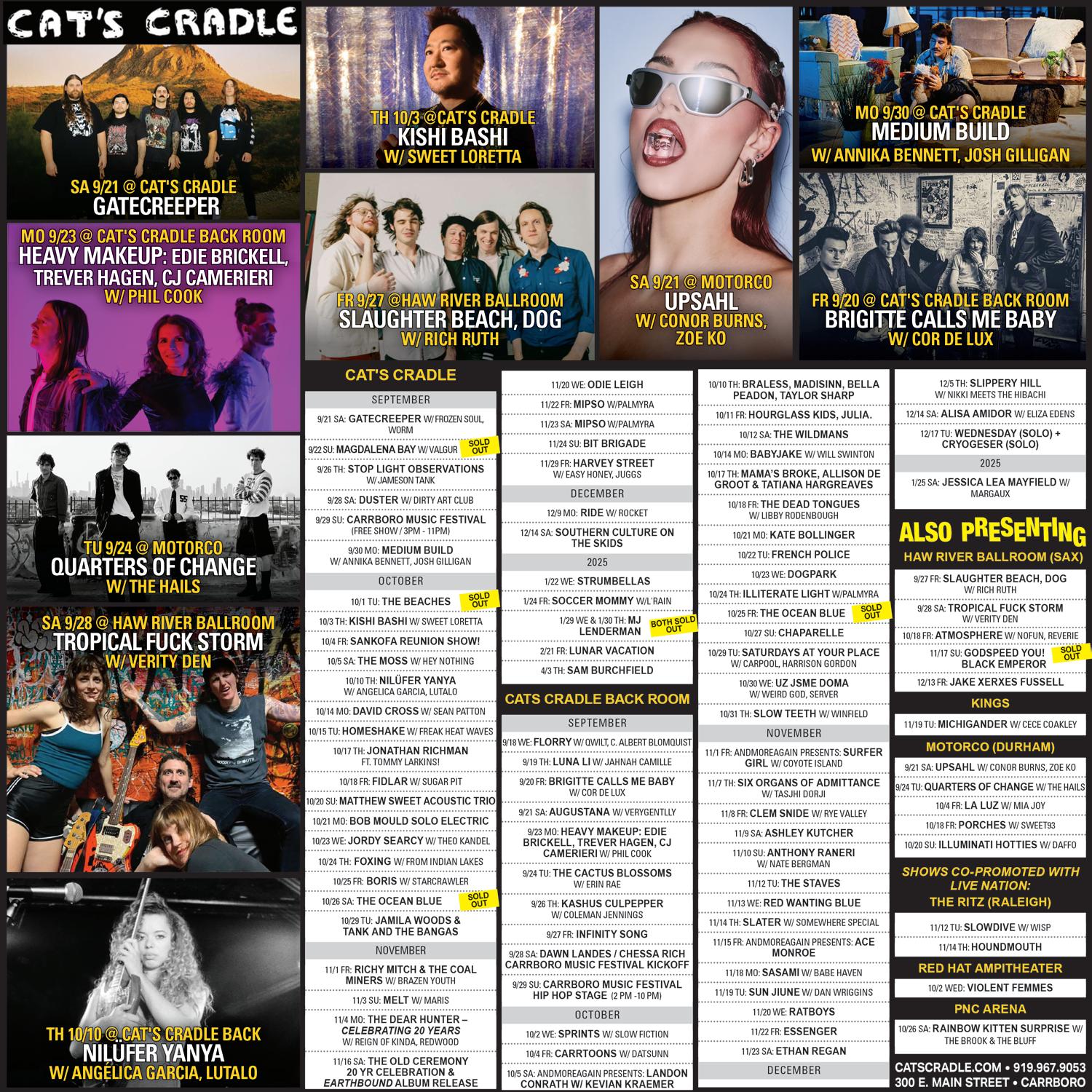
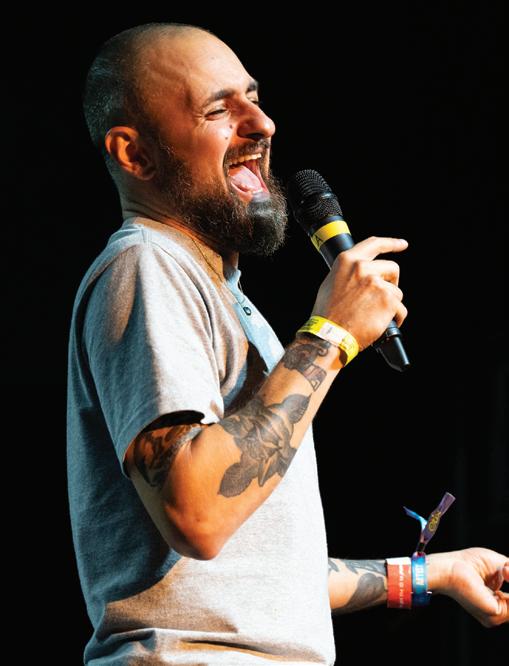
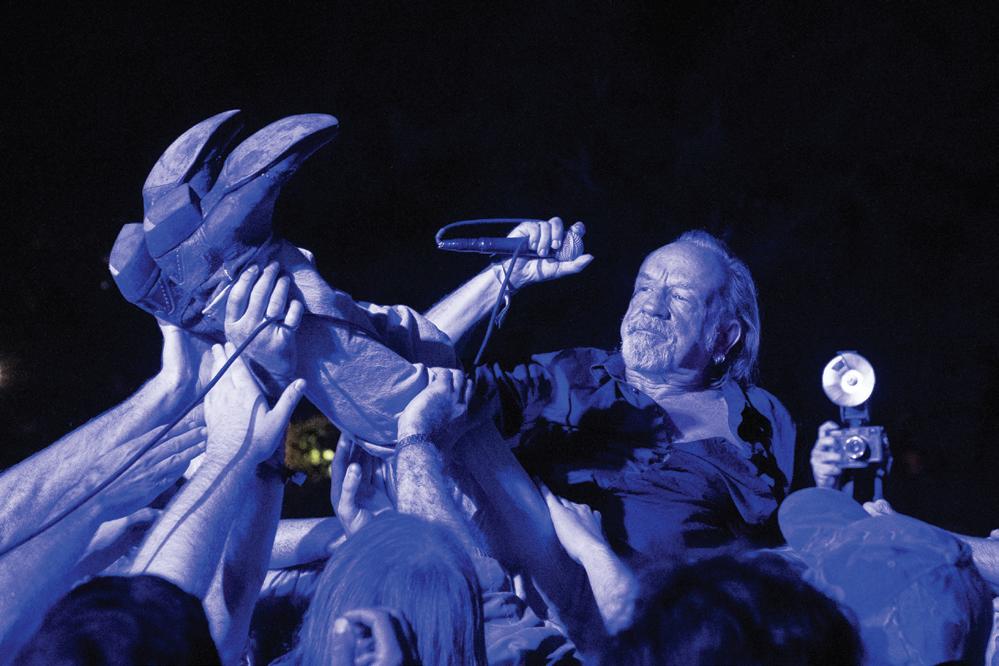

“Megalopolis,” “The Catskills,” and other movies coming soon
to local theaters.
BY GLENN MCDONALD arts@indyweek.com
You know that sinking feeling that America is in a “fall of Rome” kind of phase? You know how that was a clever joke to make a few years ago, and then not so jokey after that, and then dead serious now?
Yeah, that’s what legendary filmmaker Francis Ford Coppola’s talking about with his new film Megalopolis, premiering Sept. 27. An especially ambitious sci-fi epic, the film tells the story of a visionary architect named Cesar (Adam Driver) trying to rebuild a future metropolis called New Rome, which is in terminal decline. Opposing him are crypto-fascist forces that want to preserve the status quo for corporations and billionaires. On the plus side, Cesar has the ability to stop time.
This is a movie with serious themes in play, and it isn’t just another Trump-era panic attack, either. Coppola started working on the script in 1983 and he’s interested in a more fundamental decay. Among the film’s inspirations: James Joyce’s Ulysses, Fritz Lang’s Metropolis, Richard Wagner’s Ring cycle, and Godfrey Reggio’s feverdream documentary Koyaanisqatsi. It’s intriguing is what it is. Coppola is one of the last grandmasters still standing from the New Hollywood era of the 1970s. These are treacherous times, and we desperately need our artists to provide thoughtful (and ideally hopeful) speculative visions. “The future is being determined today, by the interests that are vying for control,” Coppola said in a recent interview. “We already know what happened to Rome.”
Megalopolis is the movie to see this fall
season, in my book. Plus, Aubrey Plaza stars as a character called Wow Platinum, and no one should be deprived of that.
For a different kind of big-swing type movie experience, consider the documentary Eno, which screened earlier this year at the Full Frame festival in Durham. Veteran indie filmmaker Gary Hustwit profiles British musician Brian Eno, a tireless innovator across multiple music genres for the last 50 years.
Eno is also beloved by artists of all stripes for his dedication to tinkering with the mechanics of the creative process itself. (Look up the phrase “Oblique Strategies” sometime.) Director Hustwit pays tribute to this with the experimental form of his new film. He developed digital exhibition technology that assembles a different edit of the film every time it’s screened, rendering each viewing of the documentary unique.
If you’re in the mood for a final summer fling, the documentary The Catskills is a love letter to the upstate New York resort area that served as a summer playground for America’s upwardly mobile from the 1920s to the 1980s. Enthusiasts of showbiz history will want to make time for this one. The art of standup comedy was more or less invented in the Catskills and a glorious parade of golden-age entertainers cut their teeth on the Borscht Belt circuit. The film also digs into the fascinating sociological aspects of this unique American community. The Catskills area was built up by and for the East Coast Jewish community that was otherwise banned from resort hotels for decades. Many of these tireless
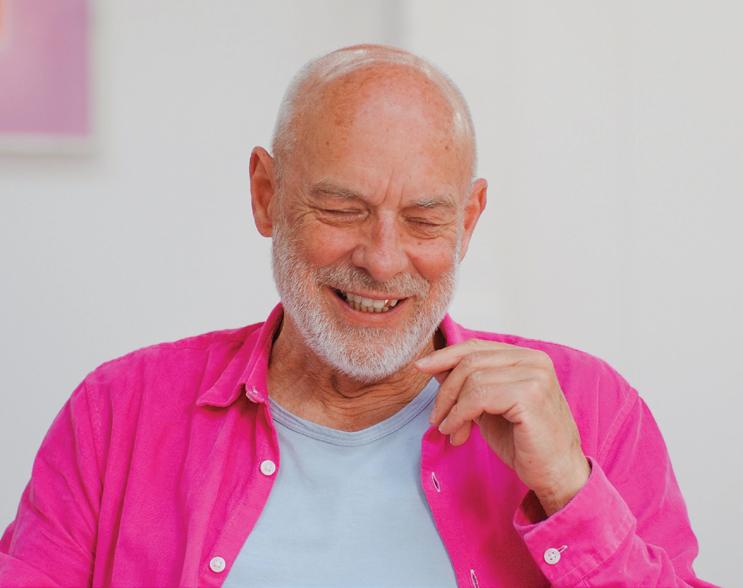

pioneers were one generation removed from European pogroms, and they created their own kind of paradise in the hills.
Halloween scary movie season is descending and at least one early-bird release looks like fun. The body-horror freakout The Substance, with Demi Moore and Margaret Qualley, concerns an aging celebrity who tries an experimental serum that produces a younger replicant version of herself. There are consequences, turns out.
For the kids, the animated sci-fi adventure The Wild Robot follows a resourceful little bot, shipwrecked on a pristine natu-
ral island world, who learns to live in harmony with nature. Eco-fiction is taking all kinds of interesting forms just now and this must be counted as a good thing. Lupita Nyong’o and Pedro Pascal lead an allstar ensemble voice cast.
For more traditional arthouse fare, the Italian import The Shadow of the Day is a period melodrama set in small-town Italy circa 1938. If you’re hoping to get lucky, Italian-language love stories are a historically powerful date-night option.
If you must, the sequel Joker: Folie à Deux brings back Gotham’s most tenacious villain, yet again—this time with Lady Gaga as eternal love interest Harley Quinn. How many times do we have to watch this movie? W
WED 9/18 THURS 9/19
Faith & Harmony / Dedicated Men of Zion 6:30 p.m. American Tobacco Campus, Durham.
Mt. Joy 8 p.m. Koka Booth Amphitheatre, Cary.
Florry, Qwilt, C. Albert Blomquist 8 p.m. Cat’s Cradle, Carrboro.
Bull Durham: A New Musical Sept 10-22, various times. Reynolds Industries Theater, Durham.
Paperhand Puppet Intervention: Earth & Sky Aug. 10-Sept. 29, various times. The Forest Theatre, Chapel Hill.
The 502s: Great American Road Trip 7 p.m. The Ritz, Raleigh.
Al Strong Presents Jazz on the Roof 7 p.m. The Durham Hotel, Durham.
Candlelight: A Tribute to Whitney Houston 7 p.m. Hayti Heritage Center, Durham.
Candlelight: Neo-Soul Favorites ft. Songs by Prince, Childish Gambino, & More 9 p.m. Hayti Heritage Center, Durham.
Luna Li 8 p.m. Cat’s Cradle, Carrboro.
9/20
Actors Improv “Word Jazz” 7:30 p.m. Sharp Nine Gallery, Durham.
An Evening of Icons: The Commodores, The Pointer Sisters & El Debarge 7:30 p.m. Red Hat Amphitheater, Raleigh.
Jason Isbell and the 400 Unit 8 p.m. Durham Performing Arts Center (DPAC), Durham.
Jelly Roll with Warren Zeiders & Alexandra Kay: The Beautifully Broken Tour 7 p.m. PNC Arena, Raleigh.
Debbie the Artist 8 p.m. Night School Bar, Durham.
North Carolina Symphony: Symphonie Fantastique
8 p.m. Meymandi Concert Hall at Martin Marietta Center for the Performing Arts, Raleigh.
Pops on the Green: Durham 6:30 p.m. American Tobacco Campus, Durham.
¡TUMBAO! It’s A Hot One 2024 Summer Tour 9 p.m. Motorco Music Hall, Durham.
Brigitte Calls Me Baby 8 p.m. Cat’s Cradle Back Room, Carrboro.
The ComedyWorx Show 8 p.m. ComedyWorx, Raleigh.

The Eschatology of Terence McKenna 8 p.m. Theatre Raleigh, Raleigh.
The Harry Show Fridays at 10 p.m. ComedyWorx, Raleigh.
Hush Hush: Comedy Based on Secrets Fridays at 9 p.m. Mettlesome Theater, Durham.
Raleigh Fringe Festival All Day, Theatre Raleigh Arts Center, Raleigh.
Wit: An Improv Comedy Game Show 7:30 p.m. Mettlesome Theater, Durham.
Augustana 8 p.m. Cat’s Cradle, Carrboro.
Black Pumas & Cory Wong: Band Together 5 p.m. Red Hat Amphitheater, Raleigh.
BLENDR: Poetic Note 10:30 p.m. The Pinhook, Durham.
Breaking Benjamin & Staind: 2024 US Tour
7:30 p.m. Coastal Credit Union Music Park at Walnut Creek, Raleigh.
‘Cigarettes and Wine’ The Jason Isbell Pre-Game Party 5 p.m. Rubies on Five Points, Durham.
The Crones of Anarchy 7 p.m. Succotash, Durham.

Gatecreeper 8 p.m. Cat’s Cradle, Carrboro.
Marcus King - Mood Swings: The World Tour 8 p.m. The Ritz, Raleigh.
Marvelous Music Series: Town of Cary presents The Sensational Barnes Brothers 7:30 p.m. Cary Arts Center, Cary.
The Pitchforks of Duke University...The 45th Reunion Concert! 7 p.m. Page Auditorium, Durham.
Pops on the Green: Chapel Hill 7 p.m. Southern Village, Chapel Hill
Riders in the Sky 2 p.m. Garner Performing Arts Center, Garner.
Shiba San 9 p.m. The Fruit, Durham.
THRIO 7:30 p.m. Sharp Nine Gallery, Durham.
UPSAHL 8 p.m. Motorco, Durham.
7 Tales from 7 Voices: A Cary Playwrights’ Forum Retrospective 6 p.m. Theatre Raleigh, Raleigh.
Harold Night 9:30 p.m. Mettlesome Theater, Durham.
Stephanie Miller’s Sexy Liberal Save The World Comedy Tour 8 p.m. The Carolina Theatre, Durham.
HUMP! Film Fest 7 p.m. The Fruit, Durham.
PAGE
Allen Stein: My Youth and Early Deaths 4 p.m. Flyleaf Books, Chapel Hill.
COMMUNITY
Centerfest Arts Festival 2024 Sept. 21-22, various times. Various locations, Durham.
MUSIC
My Brightest Diamond 8 p.m. Motorco Music Hall, Durham.
Nicole Zuraitis 5 p.m. Sharp Nine Gallery, Durham.
Sevendust Seasons 21st Anniversary Tour 5:30 p.m. The Ritz, Raleigh.
Jeremy Alder Tries That In a Small Town (Records a Comedy Special) Various times. Yonder: Southern Cocktails and Brew
Magdalena Bay: The Imaginal Mystery Tour 8 p.m. Cat’s Cradle, Carrboro.
No Shame Theatre 4 p.m. Carrboro Century Center, Carrboro.
PAGE
Ann Patchett & Robin Preiss Glasser: The Verts 2 p.m. NC State Hunt Library, Raleigh.
MUSIC
Alec Benjamin: 12 Notes Tour 6:30 p.m. The Ritz, Raleigh.
Heavy Makeup 8 p.m. Cat’s Cradle Back Room, Carrboro.
Mat Kearney: Headlights Home Tour 8 p.m. The Carolina Theatre, Durham.
PAGE
Joanna “JoJo” Levesque: Over the Influence 6 p.m. Quail Ridge Books, Raleigh.
COMMUNITY
Centerfest Arts Festival 2024 1 p.m. Downtown Durham, Durham.
MUSIC
The Cactus Blossoms 8 p.m. Cat’s Cradle Back Room, Carrboro.
Jeremy ‘Bean’ Clemons Kingfisher Tuesdays at 8 p.m. Kingfisher, Durham. North Carolina Jazz Repertory Orchestra 7:30 p.m. Sharp 9 Gallery Quarters of Change 8 p.m. Motorco, Durham.
SCREEN
Outdoor Films: Teenage Mutant Ninja Turtles Double Feature 7:30 p.m. NCMA, Raleigh.
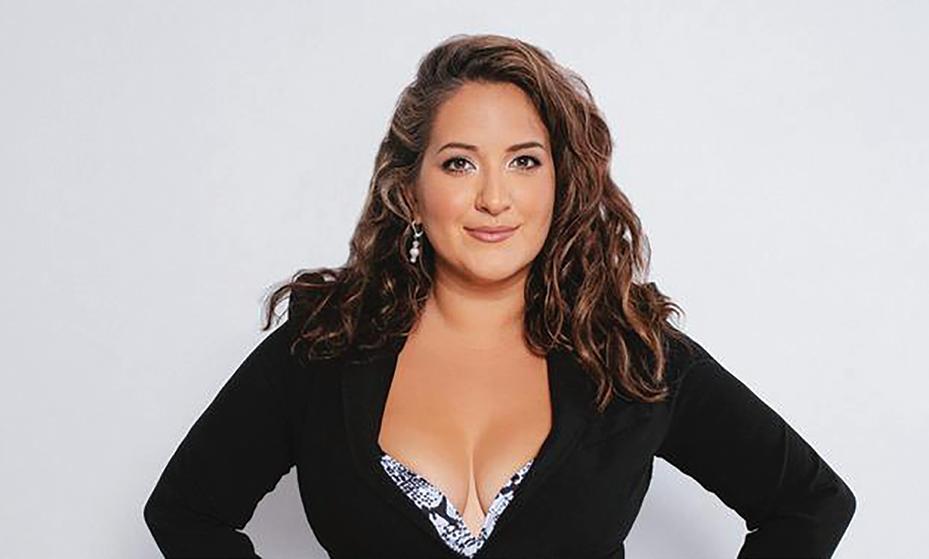
Bailter Space 7 p.m. Rubies on Five Points, Durham.
Bruce Hornsby & The Noisemakers – Spirit Trail: 25th Anniversary Tour
8 p.m. The Carolina Theatre, Durham.
Dayglow: The Tour 7 p.m. The Ritz, Raleigh.
Etran de L’Aïr 8 p.m. Motorco Music Hall, Durham.
Music Maker Blues Revue
6:30 p.m. American Tobacco Campus, Durham.
Comedy N Dice 7:30 p.m. Goodnight Comedy Club, Raleigh.
The ComedyWorx Show Fridays at 8 p.m. ComedyWorx, Raleigh.
The Harry Show Fridays at 10 p.m. ComedyWorx, Raleigh.
Hush Hush: Comedy Based on SecretsFridays at 9 p.m. Mettlesome Theater, Durham.
PAGE
Leigh Ann Henion: Night Magic 7 p.m. Quail Ridge Books, Raleigh.
Abbey Road: Beatles Tribute 8 p.m. Martin Marietta Center for the Performing Arts, Raleigh.
Dee Dee Bridgewater Quartet 7:30 p.m. Stewart Theatre at NC State University, Raleigh.
IBMA Bluegrass Live! Festival Sept. 27-28, various times. Red Hat Amphitheater, Raleigh.
Kirk Franklin: The Reunion Tour 7 p.m. PNC Arena, Raleigh.
Madeline Edwards 7 p.m. The Carolina Theatre, Durham.
Midland: The Get Lucky Tour 7:00 p.m. The Ritz, Raleigh.
North Carolina Symphony: Beethoven Symphony No. 8 Sept. 29, 3 p.m. Memorial Hall, Chapel Hill.
Tinder Live with Lane Moore: 10th Anniversary Show 8 p.m. Motorco Music Hall, Durham.

FRI 9/27
Kashus Culpepper 8 p.m. Cat’s Cradle Back Room, Carrboro.
Movie Loft presents “Ride in the Whirlwind” 8 p.m. Shadowbox Studio, Durham.
Stop Light Observations 8 p.m. Cat’s Cradle, Carrboro.
I. JORDAN 9 p.m. The Fruit, Durham.
Infinity Song 8 p.m. Cat’s Cradle Back Room, Carrboro.
Lasso: Quedarse Solo Para Siempre Tour 8:30 p.m. Martin Marietta Center for the Performing Arts, Raleigh. Peter Lamb and the Wolves 9 p.m. Sharp 9 Gallery, Durham.
Slaughter Beach 8 p.m. Haw River Ballroom, Graham.
Burning Coal presents Bringing Them Home Sep 27-29, various times. Oakwood Cemetery, Raleigh.
C.S. Lewis On Stage: Further Up and Further In 7:30 p.m. Memorial Hall, Chapel Hill.
Rooted: Ayodele Casel Sept. 27-28, 7:30 p.m. Rubenstein Arts Center, Durham.
Minrose Gwin: Beautiful Dreamers 6:30 p.m. Flyleaf Books, Chapel Hill.
Angela Bingham with the Jim Ketch Quintet 7:30 p.m. Sharp 9 Gallery, Durham.
Carrboro Music Festival Kickoff: Dawn Landes & Chessa Rich 8 p.m. Cat’s Cradle Back Room, Carrboro.
Duster 8 p.m. Cat’s Cradle, Carrboro.
Elliott Humphries 12 p.m. Lanza’s Cafe, Carrboro.
Huzzah! Hot Jazz & Swing 7 p.m. Succotash, Durham.
Mark Farina 9 p.m. The Fruit, Durham.
My Morning Jacket and Nathaniel Rateliff: Eye to Eye Tour 7:30 p.m. Coastal Credit Union Music Park, Raleigh.
Saxsquatch Presents: Cryptids with a Cause 5:30 p.m. Franklin and Columbia Street, Chapel Hill.
Sigur Rós 8 p.m. DPAC, Durham.
Tropical Fuck Storm 8 p.m. Haw River Ballroom, Saxapahaw.
Wale: Every Blue Moon Tour 7 p.m. The Ritz, Raleigh.
Nate Jackson: Super Funny World Tour 7 p.m. Martin Marietta Center for the Performing Arts, Raleigh.
Vault Theatre presents: Red Riding Hood 11 a.m. Durham Arts Council, Durham.
NCMA Cinema: The Mole Agent 2 p.m. NCMA, Durham.
COMMUNITY
Outlandish Hillsborough Scottish Festival 10 a.m. Hillsborough Visitor Center, 10 a.m.
Chromeo & The Midnight 6 p.m. The Ritz, Raleigh.
Live Jazz with Joseph Silvers and Hunter McDermut 11 a.m. Lanza’s Cafe, Carrboro.
Lyle Lovett and his Large Band 7 p.m. DPAC, Durham.
Superbloom Comedy Show with Caleb Synan and Bailey Pope 8 p.m. The Pour House Music Hall, Raleigh.
Pride: Durham, NC 2024 Sept. 28-29, various times. Various locations, Durham.
Medium Build 7:30pm. Cat’s Cradle, Carrboro.
Jeremy ‘Bean’ Clemons Tuesdays at 8 p.m. Kingfisher, Durham. Kehlani 7:30 p.m. Red Hat Amphitheater, Raleigh.
Sleeping With Sirens: Lets Cheers to This Tour 6 p.m. The Ritz, Raleigh.
PAGE
M. L. Rio: Graveyard Shift 6 p.m. Flyleaf Books, Chapel Hill.
SCREEN


To download a pdf of this puzzle or view its solution, visit indyweek.com/puzzles-page


© Puzzles by Pappocom
Difficulty level: HARD
There is really only one rule to Sudoku: Fill in the game board so that the numbers 1 through 9 occur exactly once in each row, column, and 3x3 box. The numbers can appear in any order and diagonals are not considered. Your initial game board will consist of several numbers that are already placed. Those numbers cannot be changed. Your goal is to fill in the empty squares following the simple rule above.

If you’re stumped, find the answer keys for these puzzles and archives of previous puzzles (and their solutions) at indyweek.com/puzzles-page or scan this QR code for a link. Best of luck, and have fun!

Data Engineer III sought by LexisNexis USA in Raleigh, NC to perform moderate research, design, data engineering assignments within specific engineering functional area/product line. Own specific set/group of data transfers in various capacities including collection setup, data transfer setup, contributor/customer setup, etc. Minimum of Bachelor’s degree or foreign equivalent in Computer Science, Computer Engineering, Information Technology, Management Information Systems, or rltd + 3 yrs exp in job offered or rltd occupations required. Employee reports to LexisNexis USA office in Raleigh, NC but may telecommute from any location within US. Interested candidates should apply via following link: https:// relx.wd3.myworkdayjobs.com/relx/job/Raleigh-NC/ Data-Engineer-III_R83100
Siemens Medical Solutions USA, Inc. seeks Technical Support Technician 4 in Cary, NC. Provide technical support to customers or Field Service Engineers for Magnet systems manufactured by Siemens. Reqs: Bach deg or foreign equiv in Elec Eng., Mech. Eng. or rel fld & 5 yrs of rel exp. To apply, go to: https://jobs.siemens.com/careers/ job/563156120633464?microsite=siemens.com
Platform Software Engineer
Platform Software Engineer (needed in Raleigh, NC) to dsgn & implmt s/ware for digital platforms. Use various tools important for s/ware engg & IT mgmt such as GIT, Eclipse, & Visual Studio. Troubleshoot & resolve s/ware related issues & involve in code dvlpmt, debugging, & deployment. Proficient w/ MySQL, MS-SQL Server. Use JIRA to streamline project mgmt, team collaboration, & job mgmt. Various unanticipated locations throughout the United States. Reqs a Bach’s deg in Comp Sci, IT, or a related field & 24 months exp. Mail resumes to Sky Systems, Inc, 8801 Fast Park Dr, Ste 201, Raleigh, NC 27617.
Software Engineer II
Software Engineer II, F/T at Truist Bank (Raleigh, NC) Deliver technically complex solutions. Perform system integration support for all project work. Dvlp customized coding, s/ware integration, perform analysis, configure solutions, using tools specific to the project or the area. Must have Bachelor’s deg in Comp Sci, Comp Engg, or rltd techn’l field. Must have 4 yrs of exp in s/ware engg or IT consulting positions performing/utilizing the following: Amazon Web Svcs, incl EC2, Simple DB, S3, Elastic Load Balancing, SQS, AWS Identity & access mgmt, AWS Cloud Watch, Terraform, Cloud Front, & Redshift; using & implmtg dsgn patterns, incl Model-View-Control (MVC), Data Access Object (DAO), Service Locator Factory, Singleton, & Business Delegate; Spring Framework, incl Spring IOC, Spring DAO, Spring ORM, Spring Resources, Spring JDBC, & Micro-Services; Creating & maintaining architecture for Restful API using Spring Boot; using Spring Boot Actuator to monitor & manage the applic in a production envrmt; using Microservice architecture w/ Spring Boot based svcs interacting through a combination of REST & Apache Kafka message brokers; working w/ ZooKeeper; implmtg continuous integration/continuous delivery (CI/CD) pipelines; participating in & driving effective scrum ceremonies incl daily scrum, backlog grooming, sprint planning, reviews, & retrospectives; coord’g w/ the product owners, business, & dvlpmt teams in planning sprints & triage defects; & troubleshooting issues & providing necessary support to keep applics running. Position may be eligible to work hybrid/ remotely but is based out of & reports to Truist offices in Raleigh, NC. Must be available to travel to Raleigh, NC regularly for meetings & reviews w/ manager & project teams w/in 24-hrs’ notice. Apply online (https://careers.truist.com/) or email resume to: Paige.Whitesell@Truist.com. (Ref Job# R0093408)
Test Development Manager (MetaMetrics, Inc., Durham, NC) Dvlp multi-media English language assessments in reading, listening, speaking, writing. Reqs.: Master’s deg or foreign equiv in Education, Curriculum & Instruction, or Teaching of English as a Second Language plus coursework, internships, or exp to incl performing hypotheses testing (t-tests, Chi-squared tests, One-way/ Factorial ANOVA). This is a telecommuting position w/ remote benefit from various unanticipated locs throughout the U.S. Occasional travel to employer’s HQs. Mail resumes to Attn: HR #2440, 800 Taylor St., Ste 102, Durham, NC 27701.
